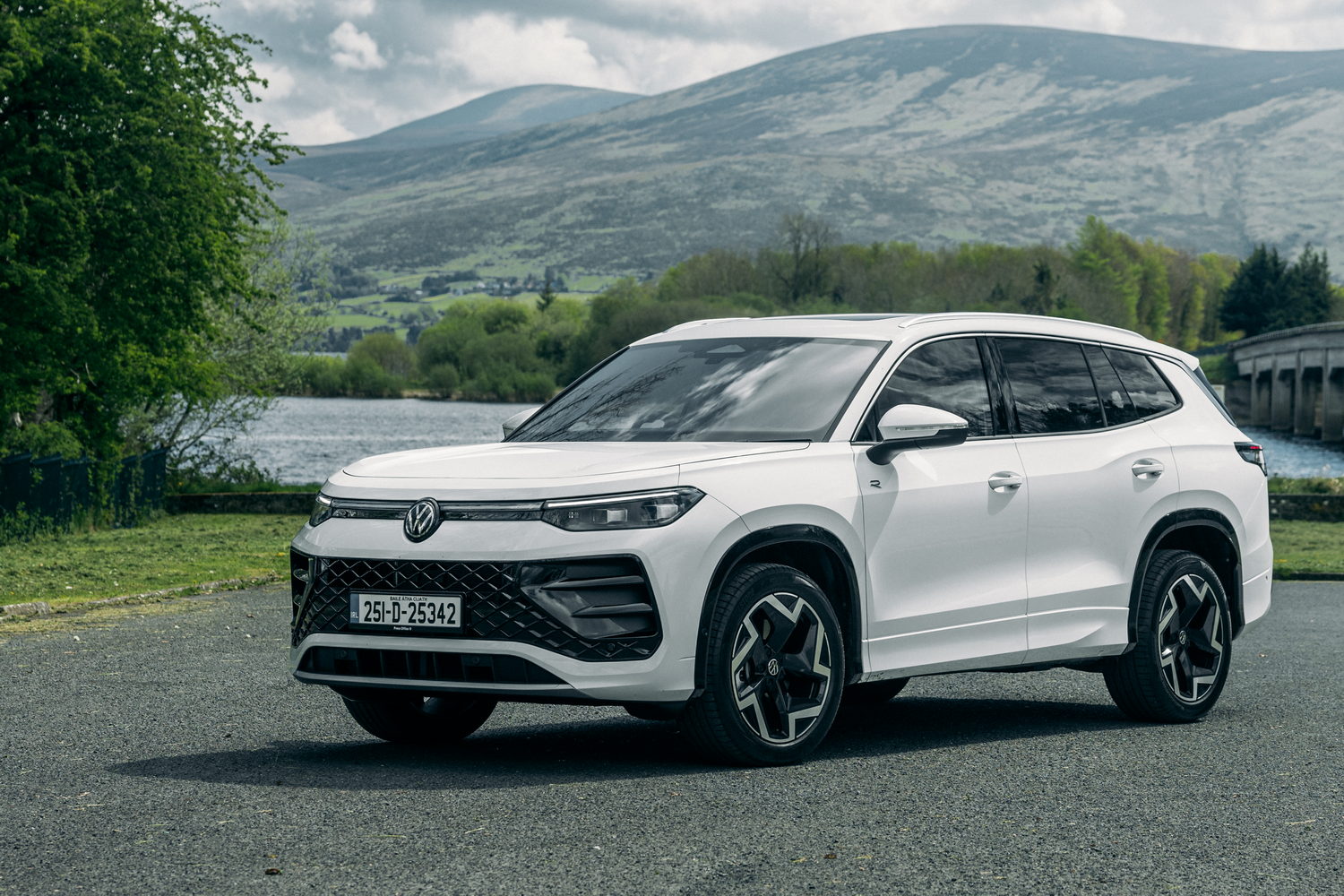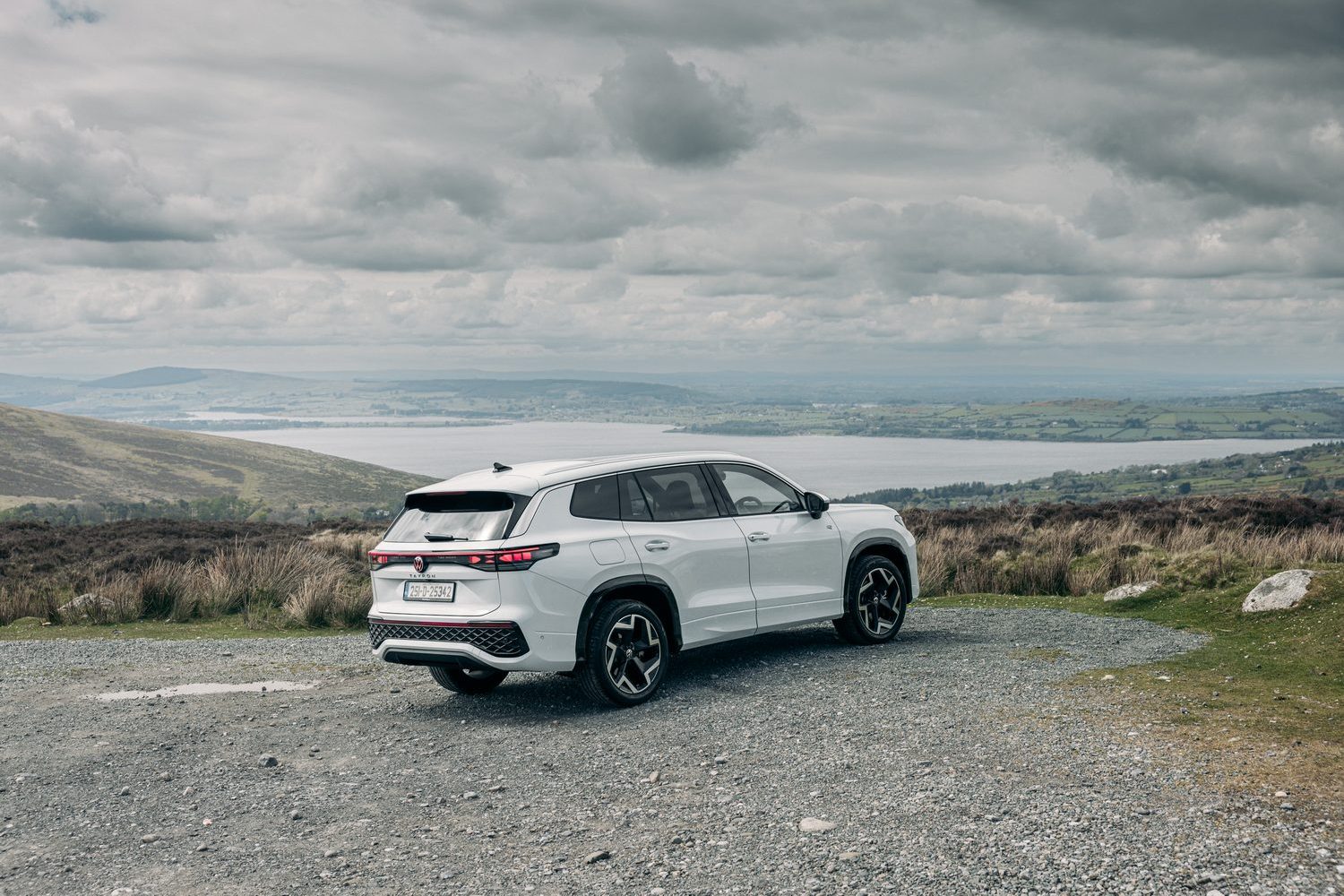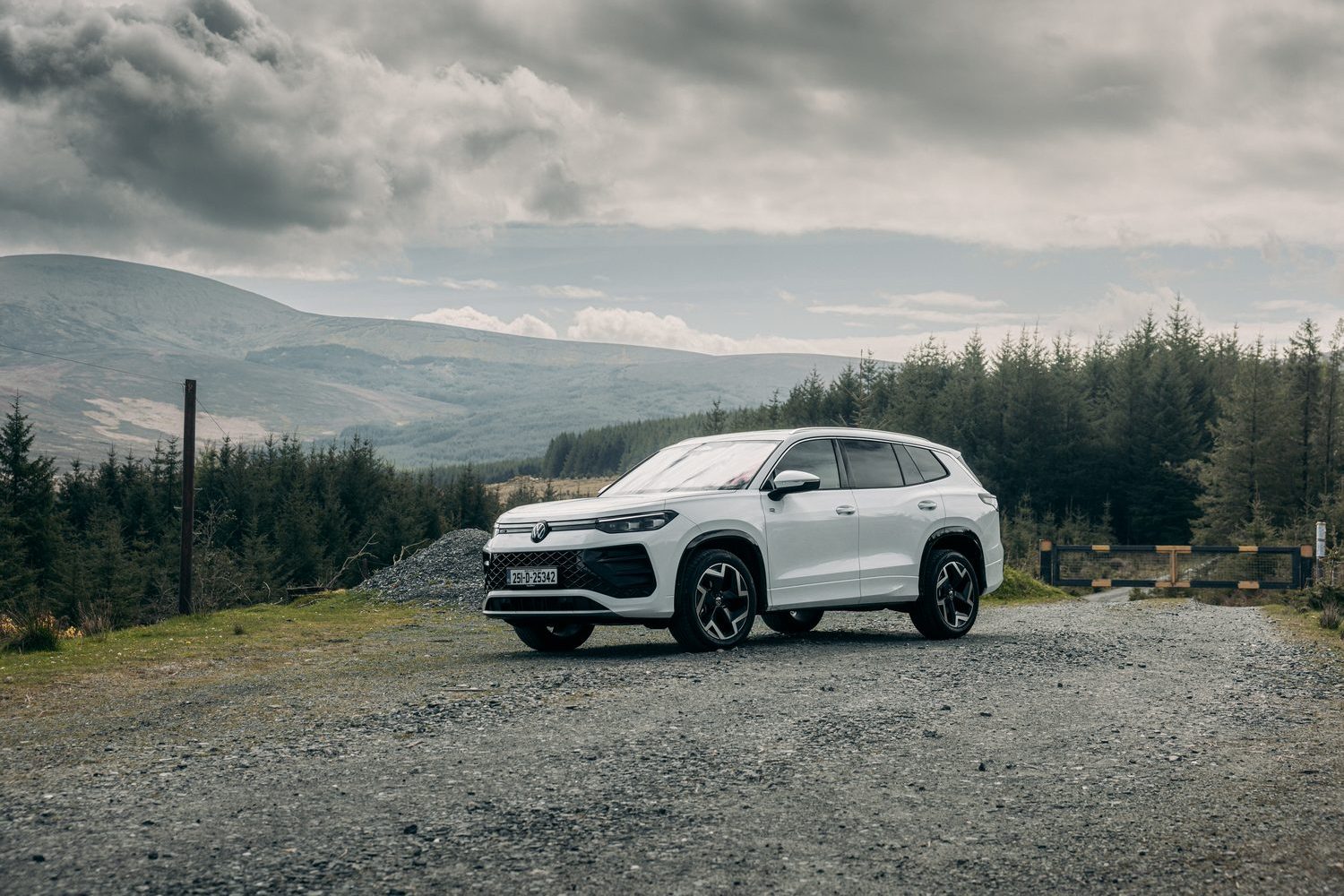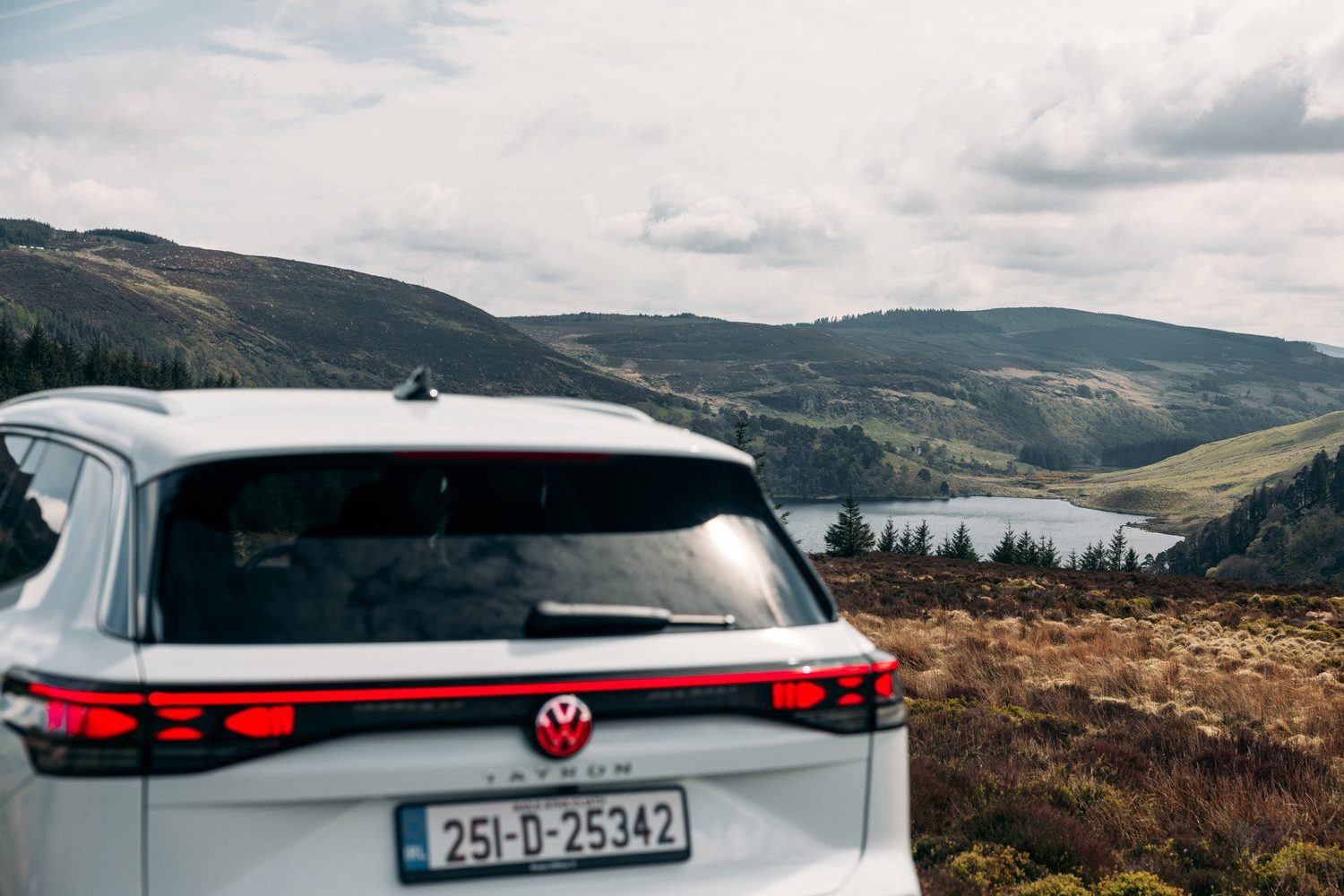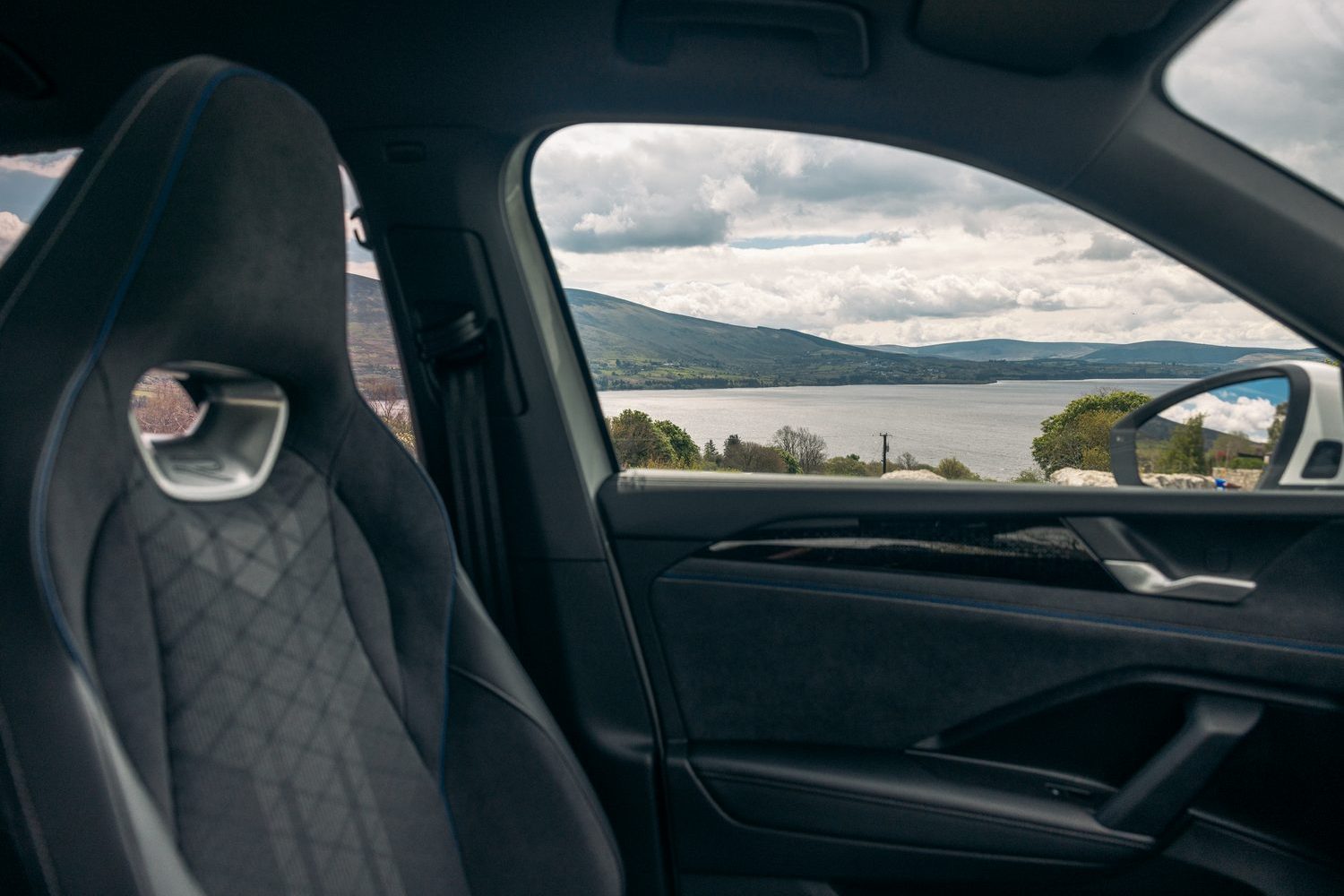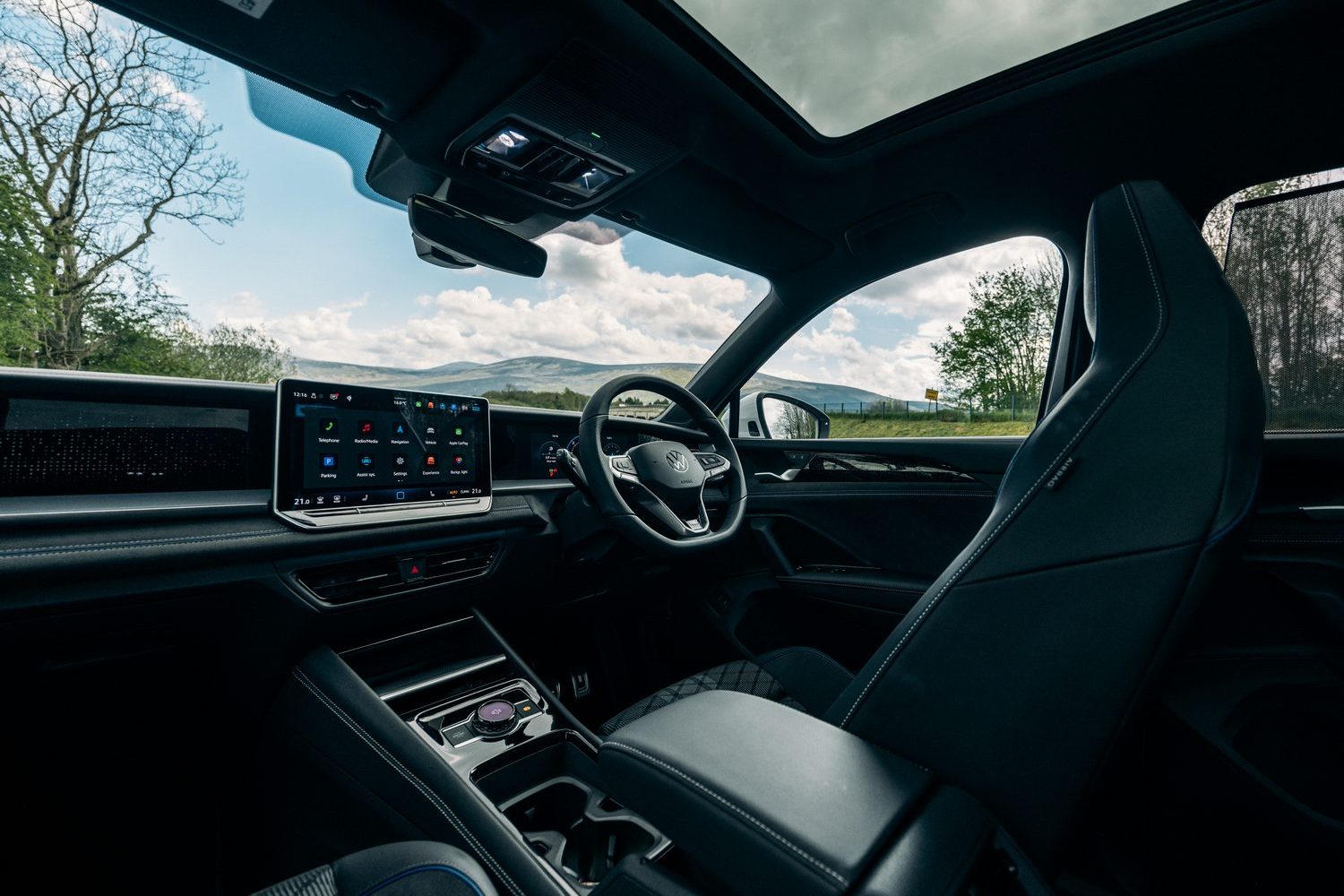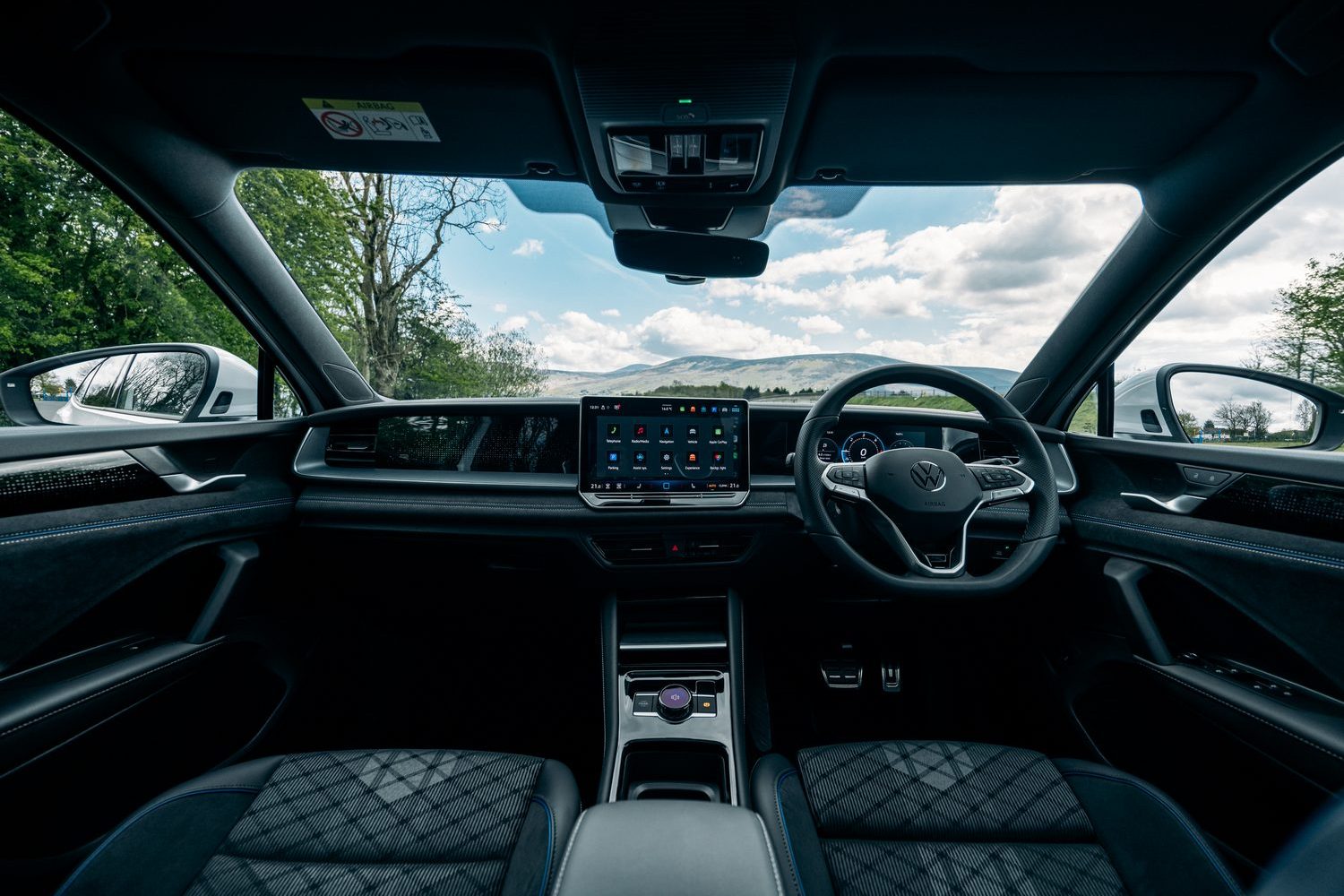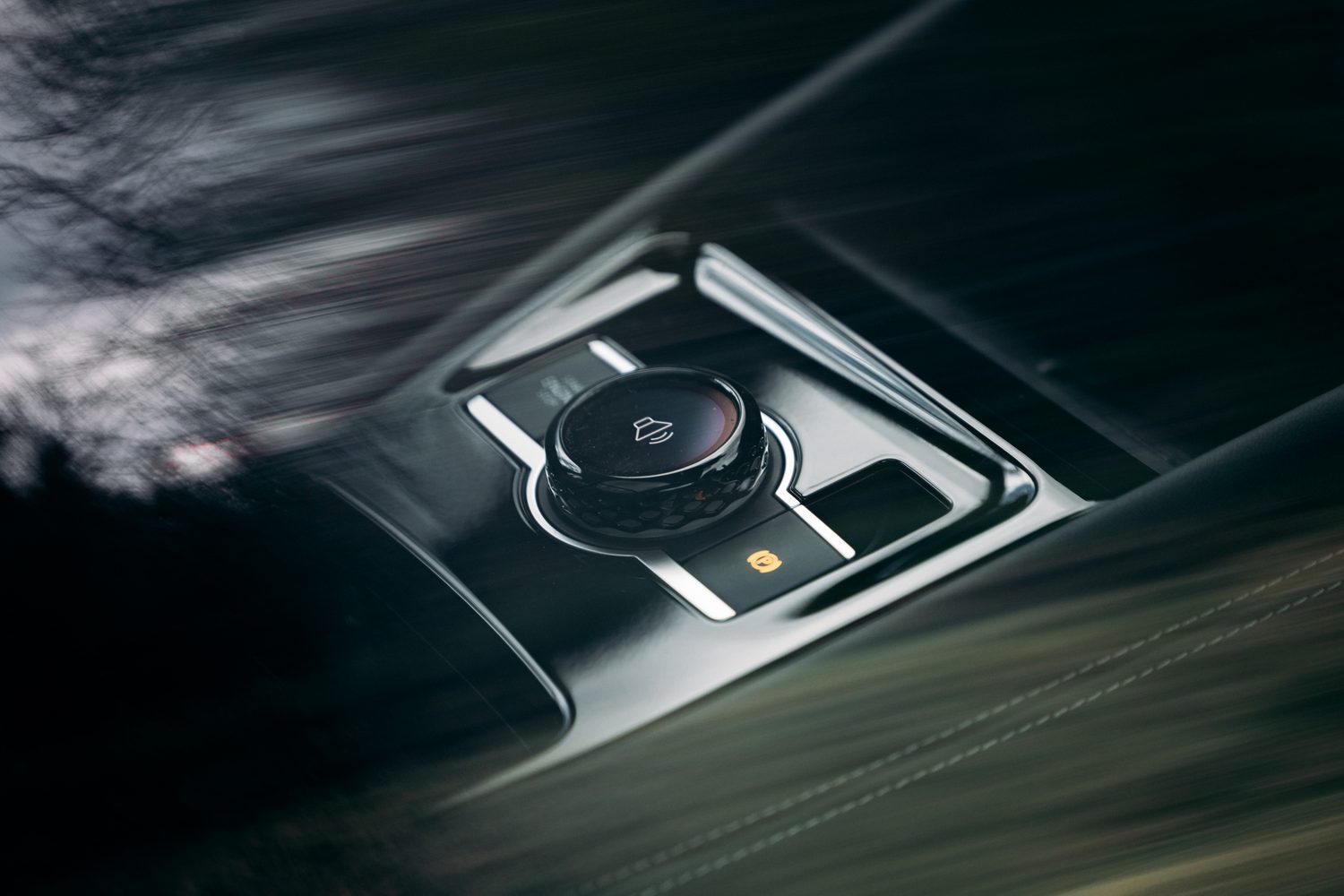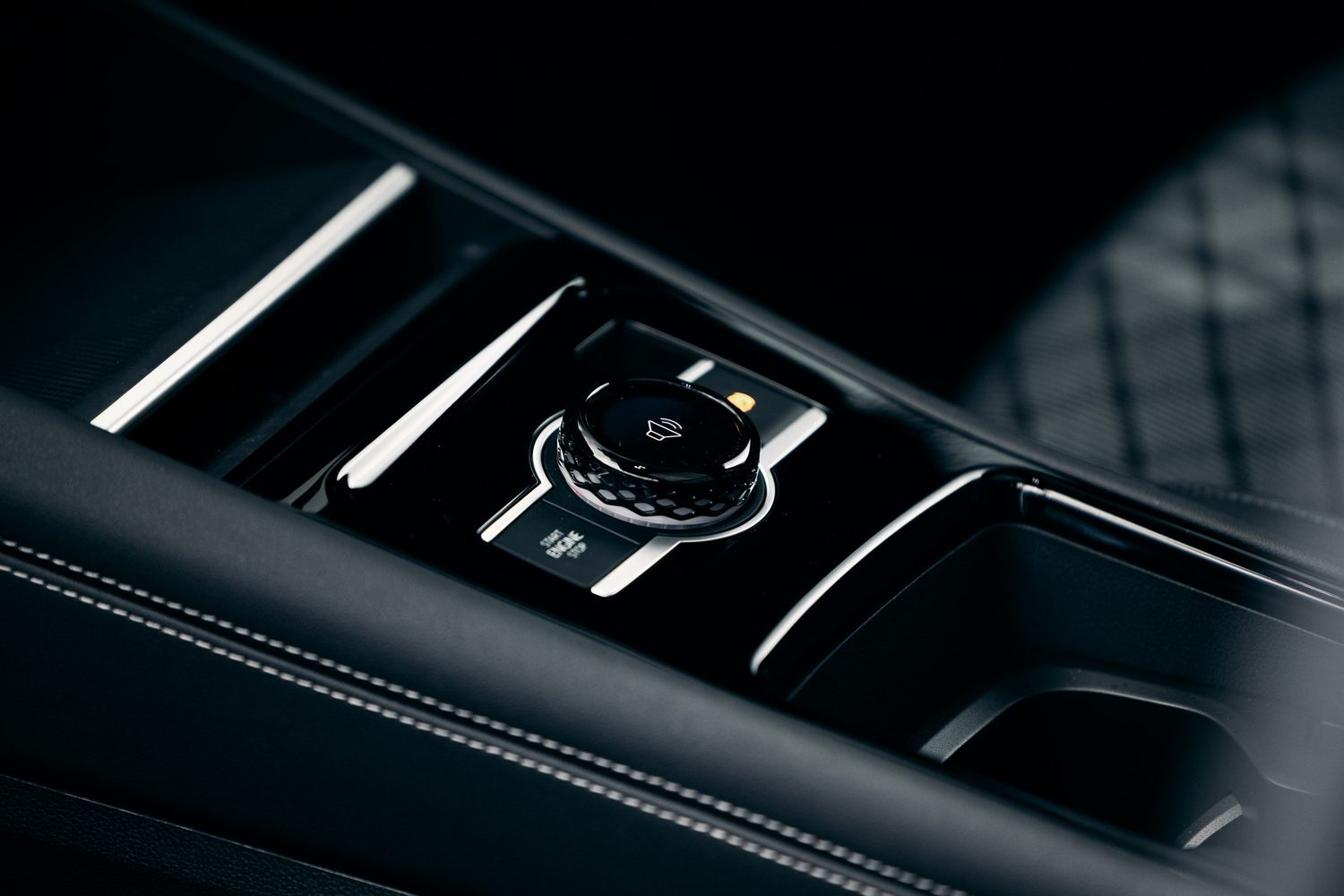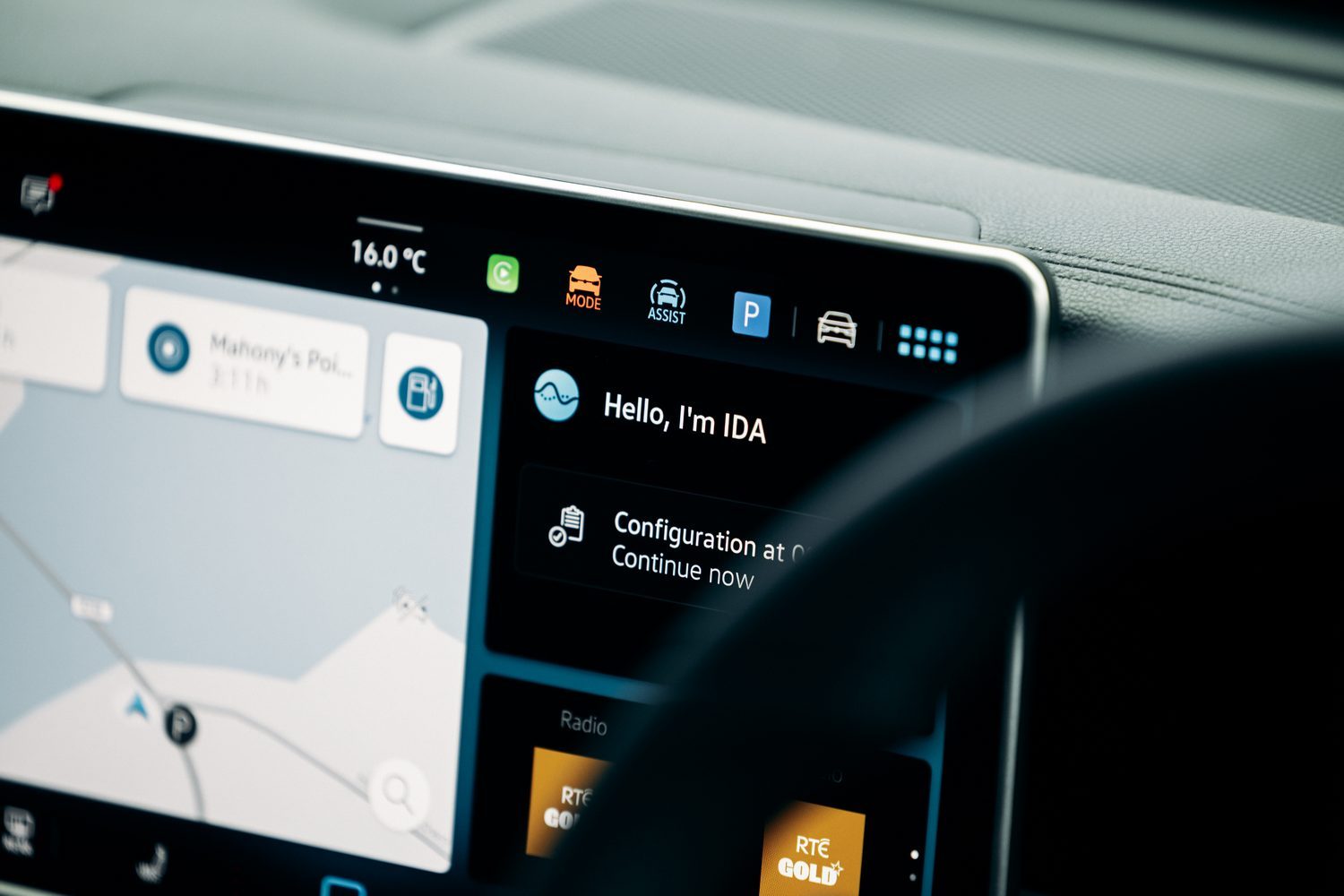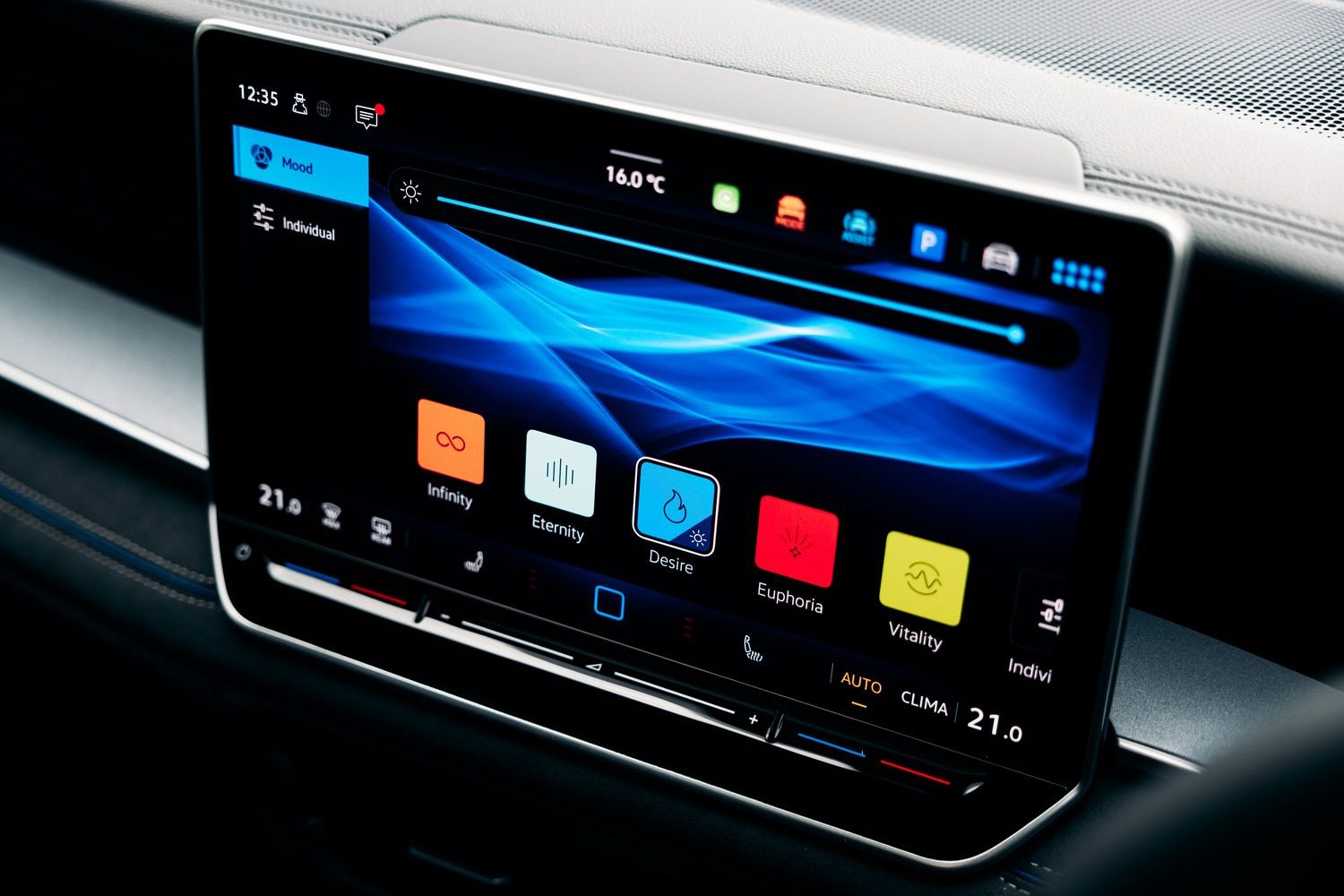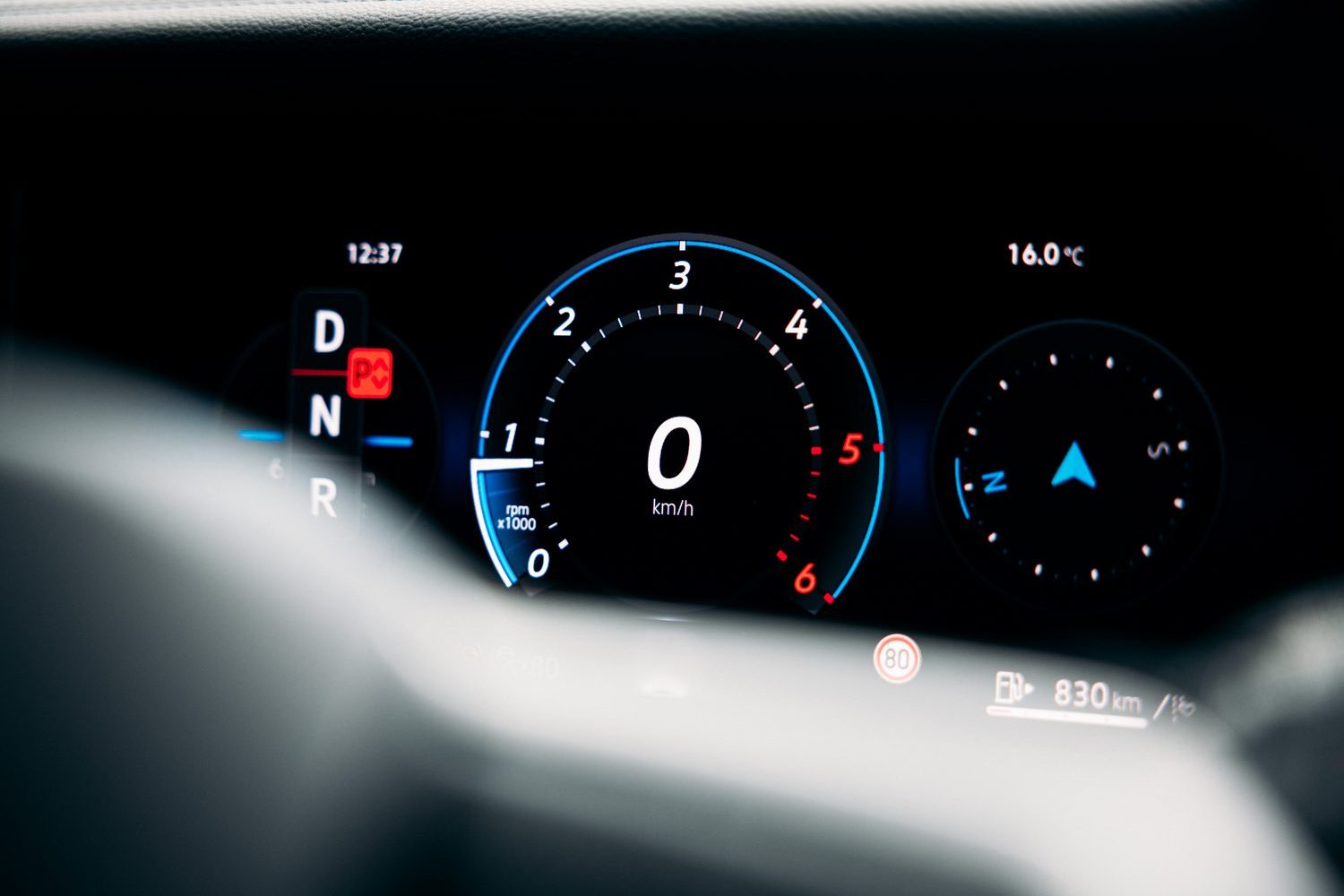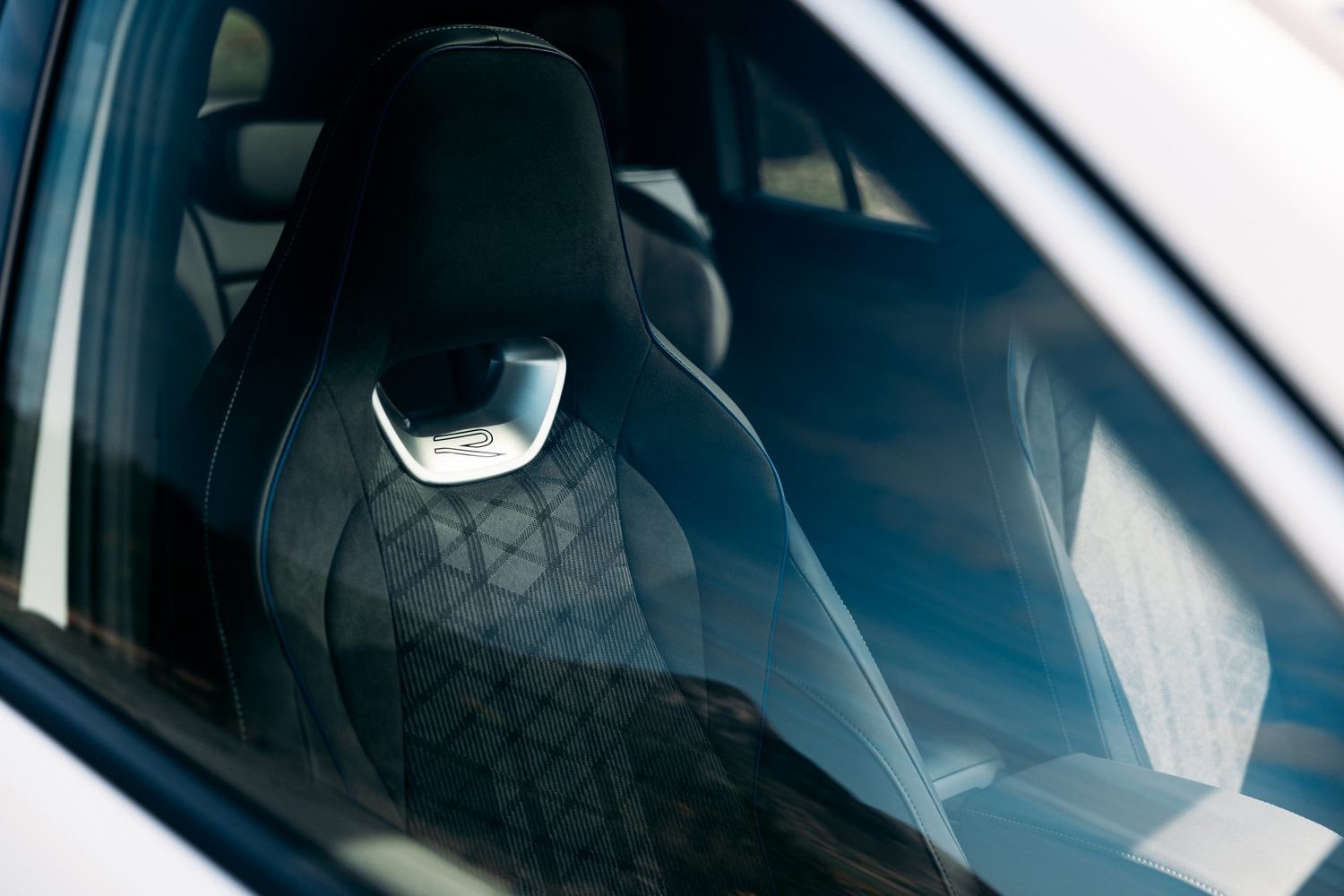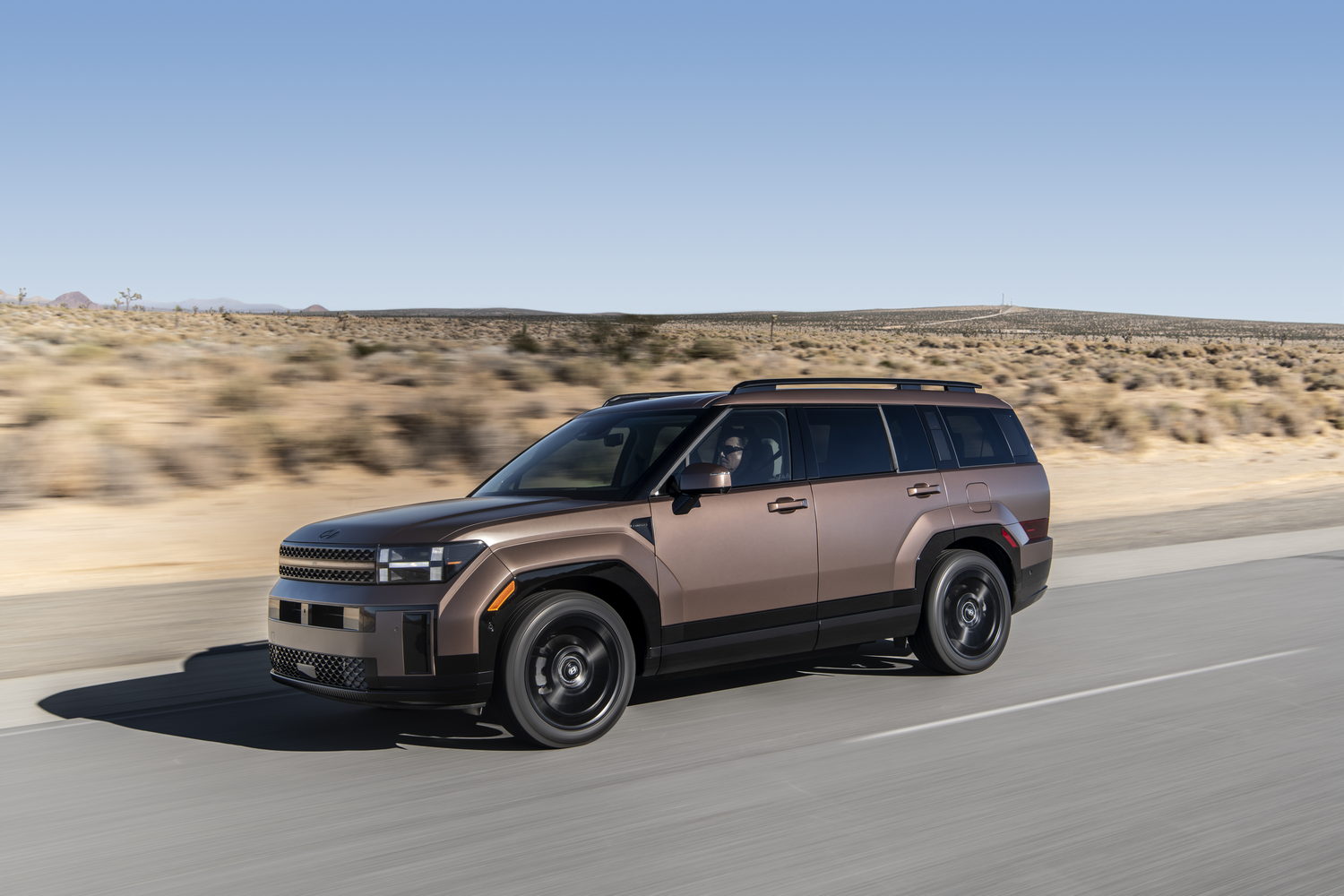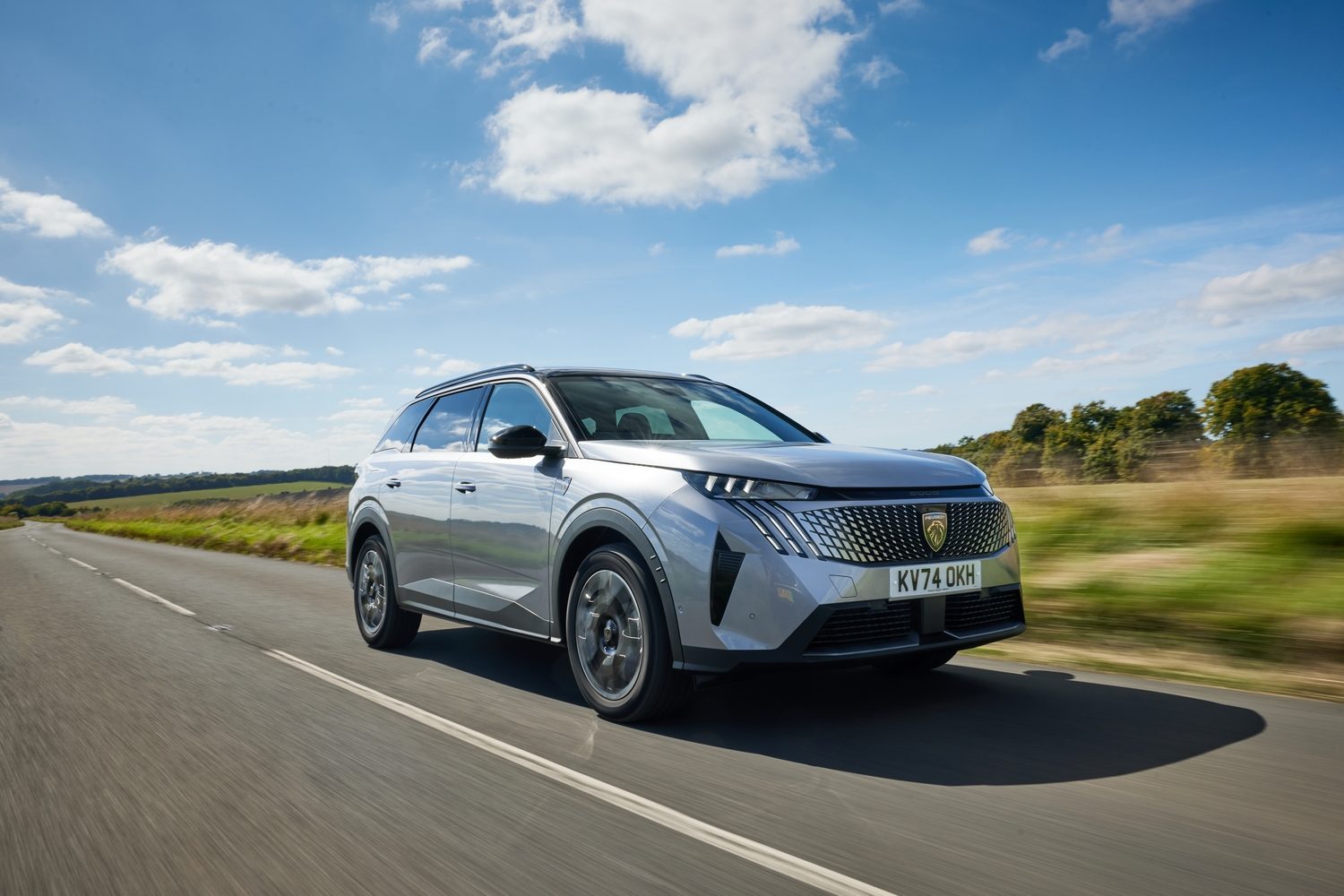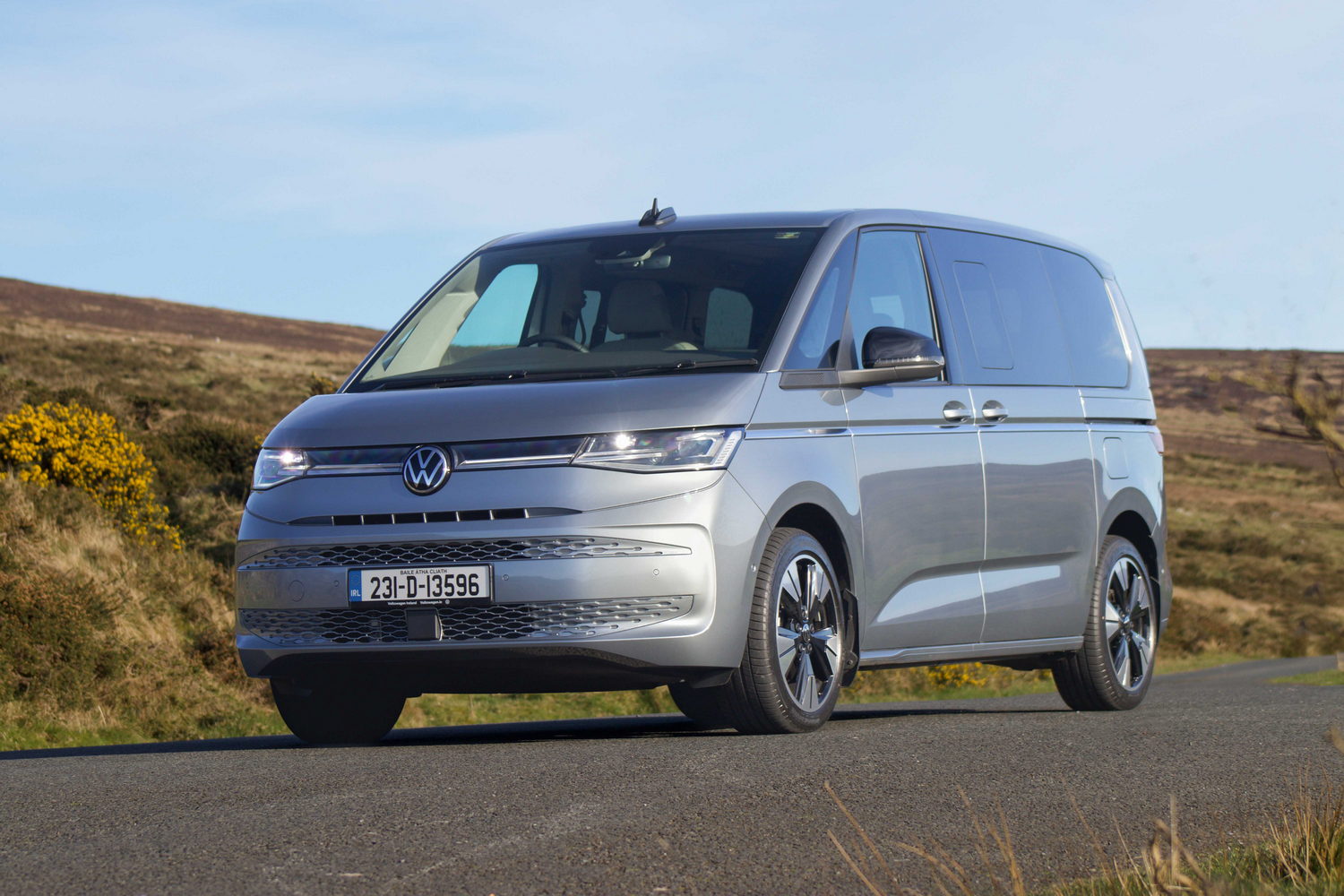Introduction to the 2025 Volkswagen Tayron
What was once a sub-set of the popular VW Tiguan - the seven-seat Tiguan Allspace - has now become a model all in its own right. Meet the Tayron, and that's pronounced 'Tie-ron' like Porsche's Taycan, rather than sounding like you're asking if someone called Ron fancies a cup of tea.
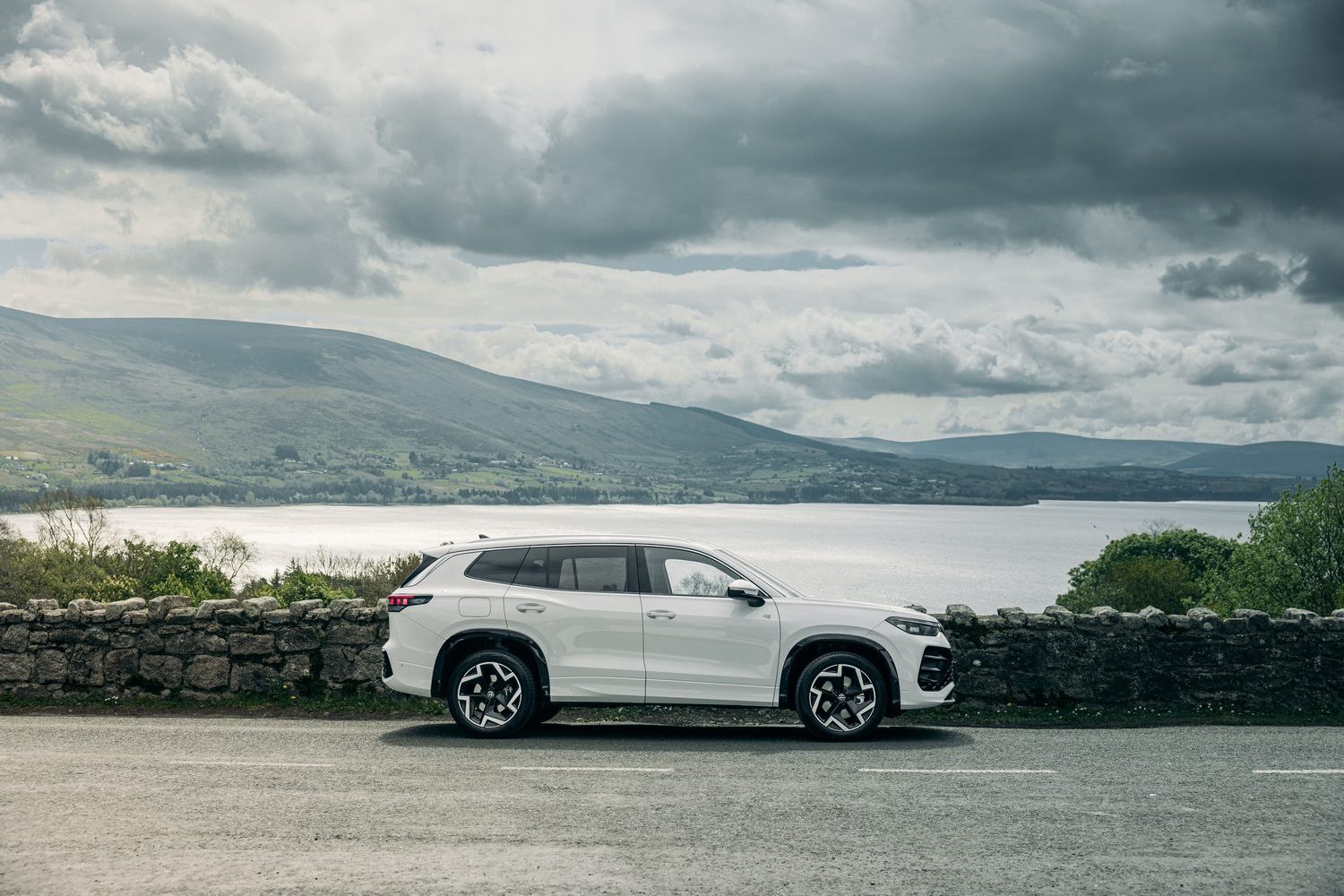
Being based on the Tiguan gives the Tayron a significant leg up in life. It keeps the Tiguan's rather handsome lines, at least as far back as the C-pillar, after which the extra rear overhang and body bulk is well enough integrated that most people simply won't notice any visual difference.
There is quite a bit of difference, though, as the Tayron stretches out to 4,792mm compared to the Tiguan's 4,539mm, and the Tayron's wheelbase is longer too - 2,788mm compared to 2,681mm.
This, of course, makes it much roomier inside than the Tiguan, and while the back seats of a Tiguan are hardly cramped, there is considerably more legroom in the back of the Tayron, though headroom is broadly the same. That rear seat slides back and forth too, so you can juggle the legroom available between the second and third rows or allow for more boot space without folding down row two.
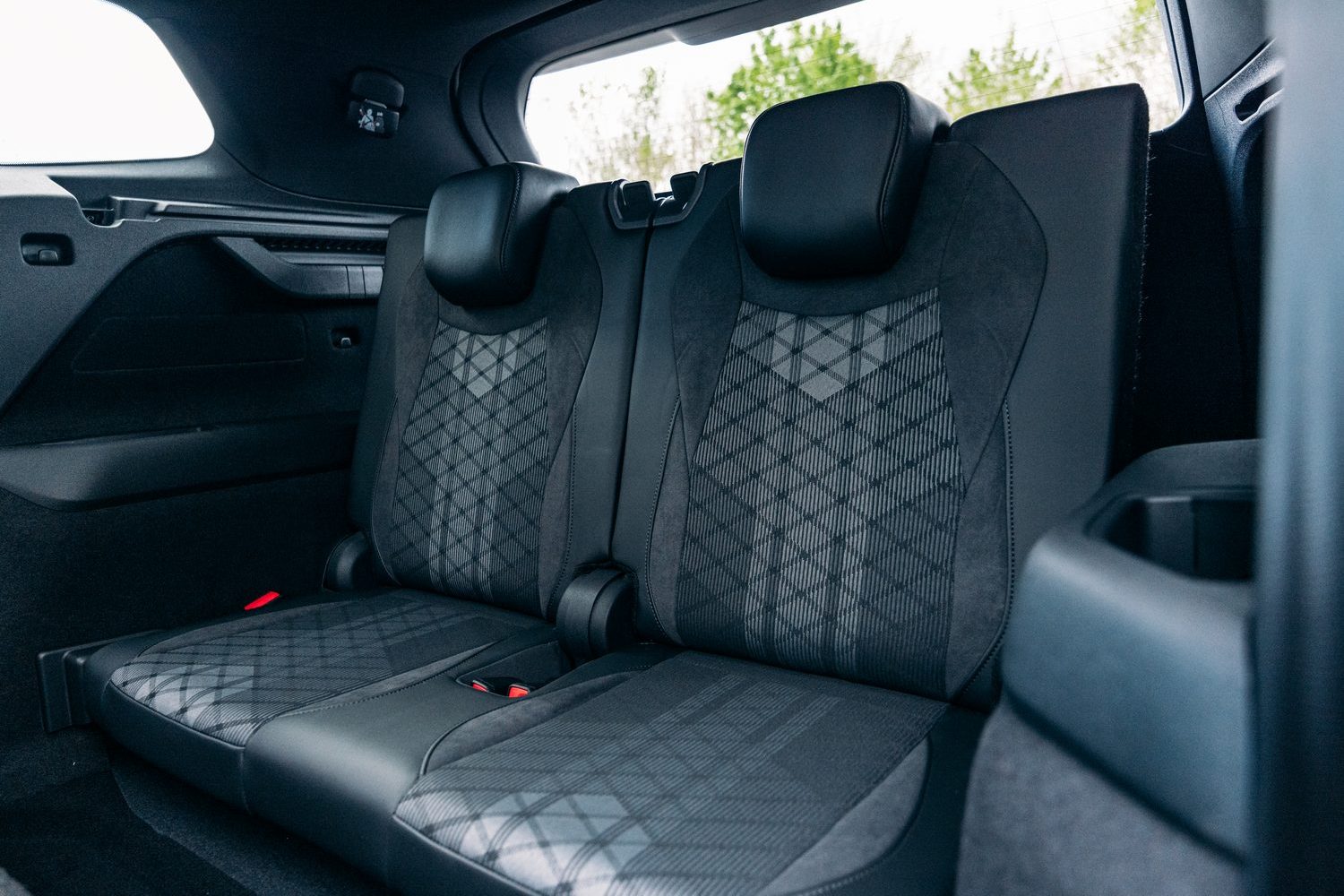
That extra row of seats is, though, only available if you plump for diesel power. There is a plug-in hybrid Tayron eHybrid, using the impressive new long-range hybrid setup shared between VW, Skoda, Cupra, and Audi, meaning that it can run for an official 116km on electric power alone.
However, the battery takes up the space into which the third row of seats would fold, so a PHEV Tayron is also strictly a five-seat Tayron.
The third row is useful, but as with many similar seven-seat SUVs, there's not really enough space back there for adults. Indeed, there's not really enough space for anyone much over primary school age. Headroom is OK, but space for knees and feet in row three is at a premium, unless you've slid the row two seats forward quite a bit.
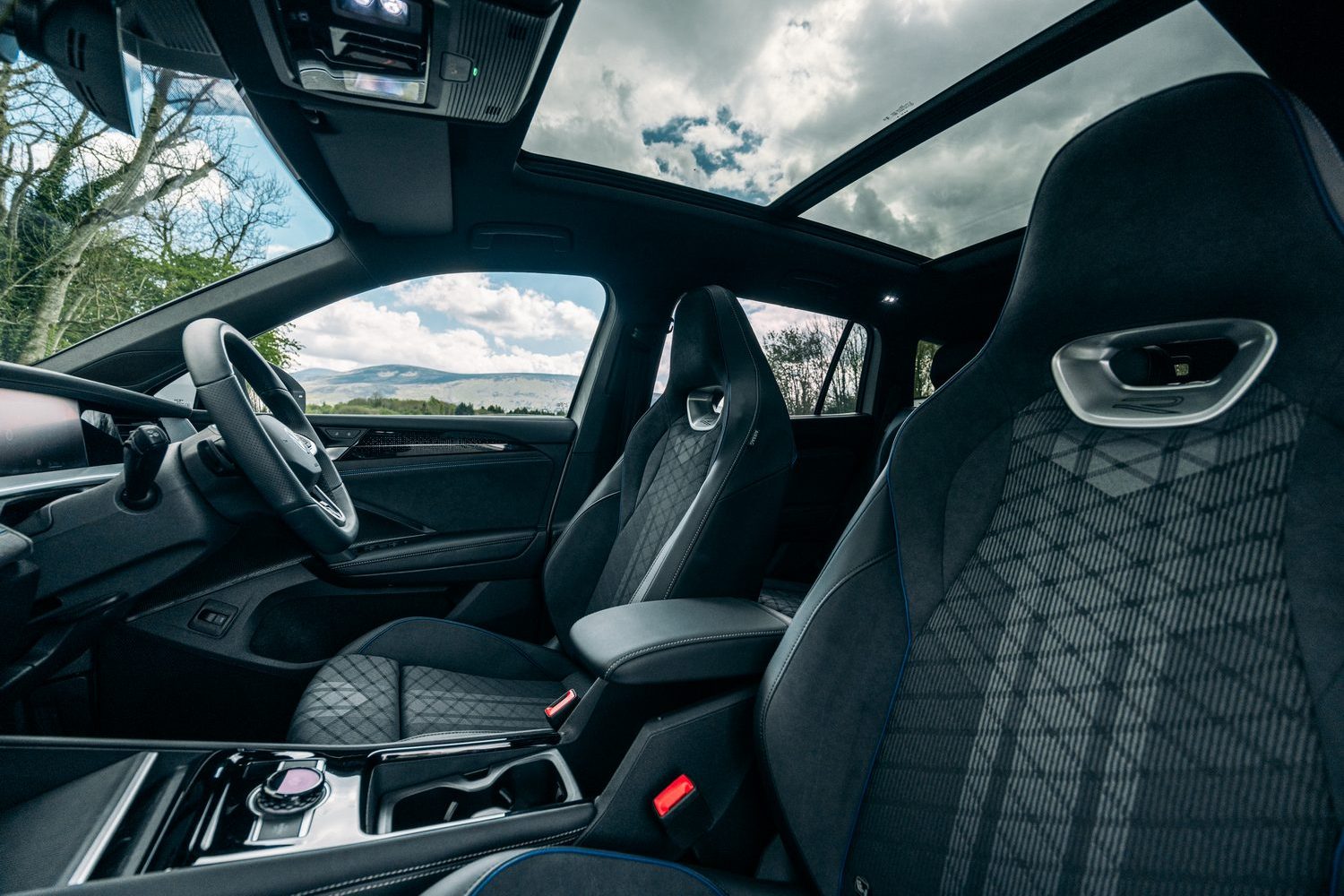
If you want a VW product with proper space for seven full-sized passengers, consider a Multivan or long-wheelbase ID. Buzz instead.
Up front, the dash is the same as that of the Tiguan's, which means you get the generally impressive new 12.9-inch touchscreen, clear and simple digital instruments and a single physical rotary controller which looks after stereo volume and driving modes (as well as VW's slightly twee 'Atmospheres', which change the colour and tone of the ambient lighting).
Quality seems very high, and the high-back front bucket seats of our R-Line 75 car - a trim that celebrates Volkswagen's 75 years of selling cars to Irish people - were exceptionally comfortable, but while the outer edges of those seats get a high-quality suede-style covering, the centres, complete with a GTI-like tartan pattern, use a rather cheap fabric that's not at all commensurate with this car's lofty price point.
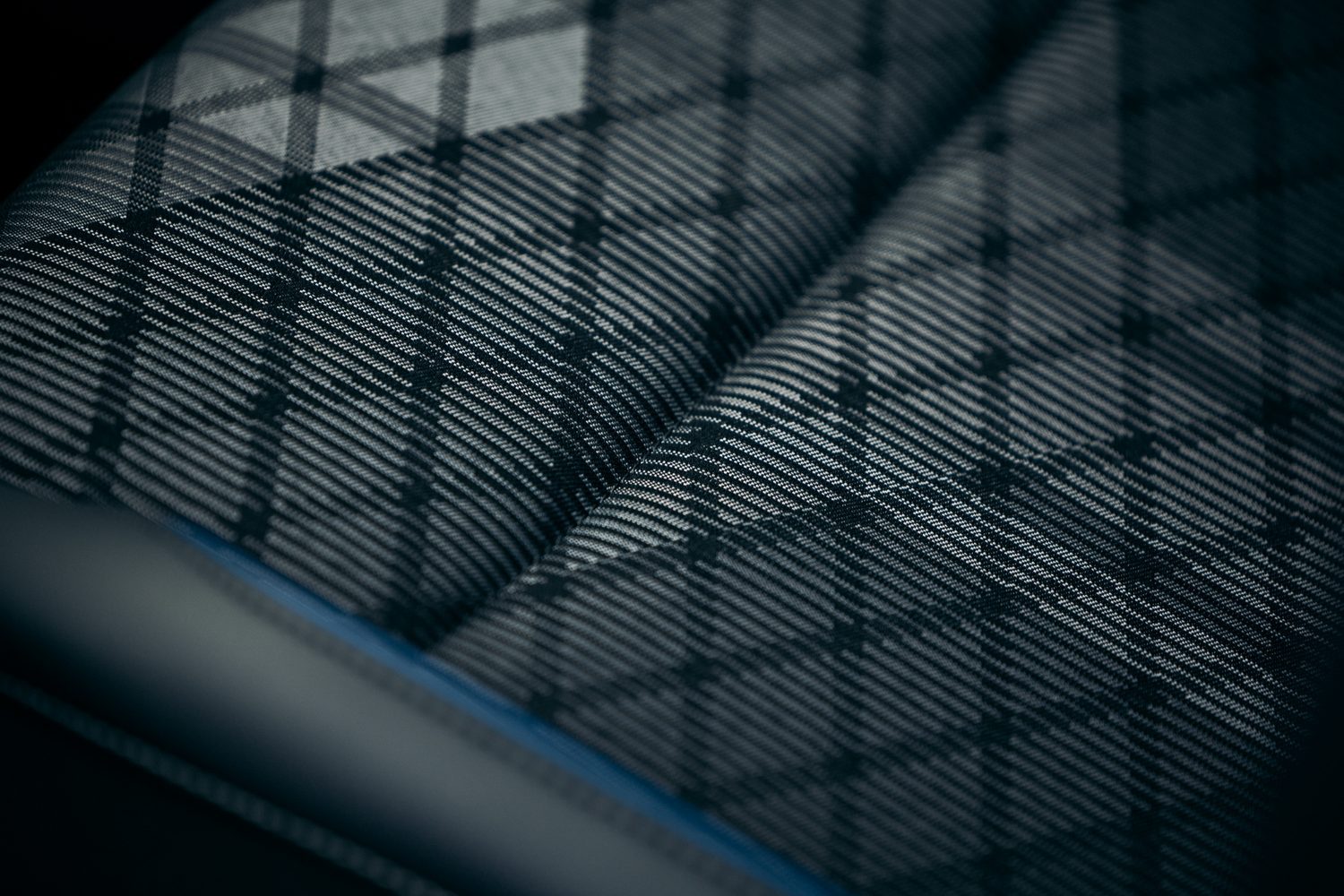
Pros & Cons of the 2025 Volkswagen Tayron
Pros: Seats for seven, big boot, high quality, comfort and refinement
Cons: Can't have seven seats and plug-in hybrid power
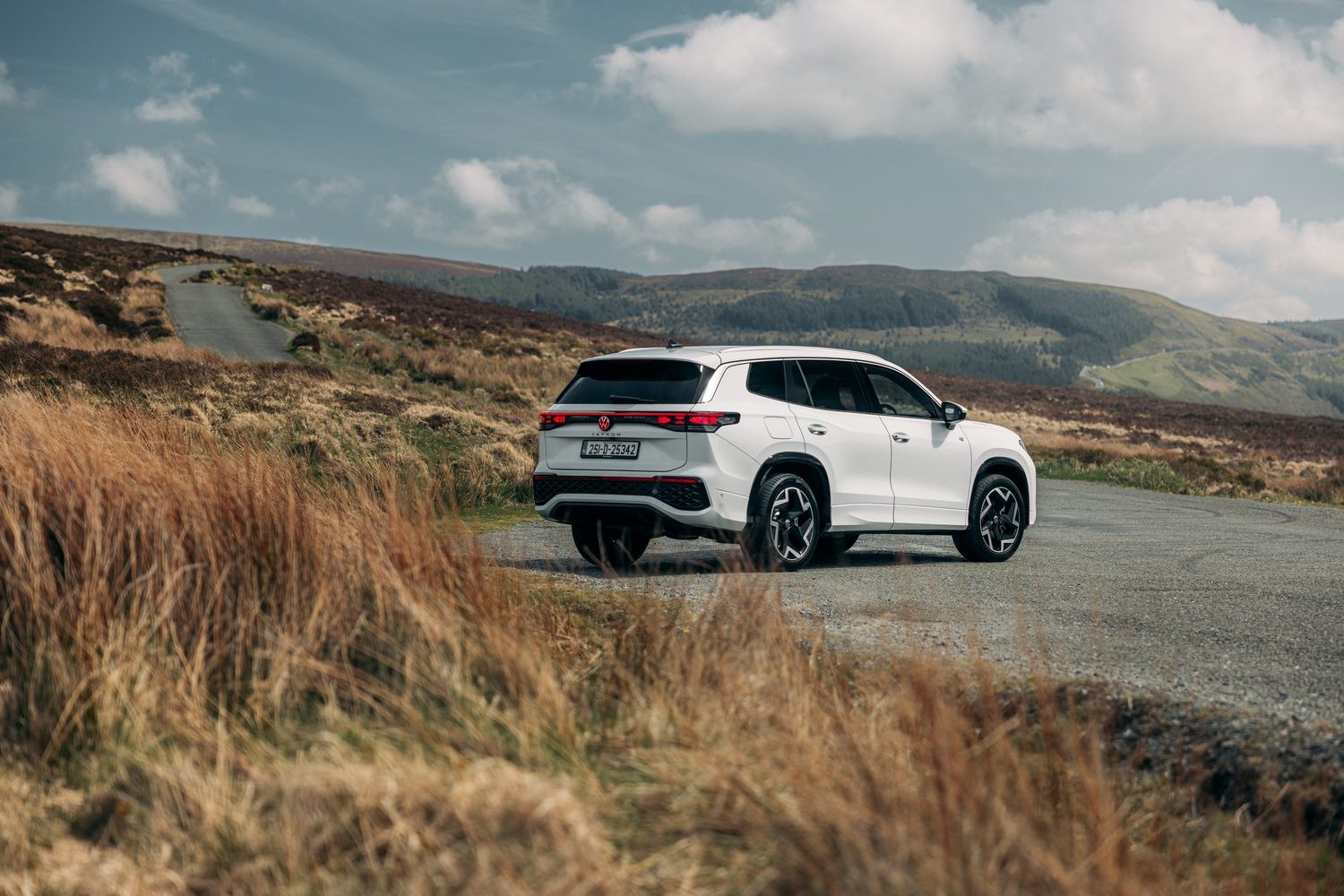
Irish Pricing & Rivals of the 2025 Volkswagen Tayron
• All models priced above €55,000
• Life, Edition 75, Elegance and R-Line trim levels
• Very good standard equipment
The Tayron is far from being an affordable car, with not a single model currently priced below the €55,000 mark. That's a lot of money, but then again few if any rivals are any less expensive, and the Tayron undercuts the likes of the Hyundai Santa` Fe and Kia Sorento by as much as €10,000.
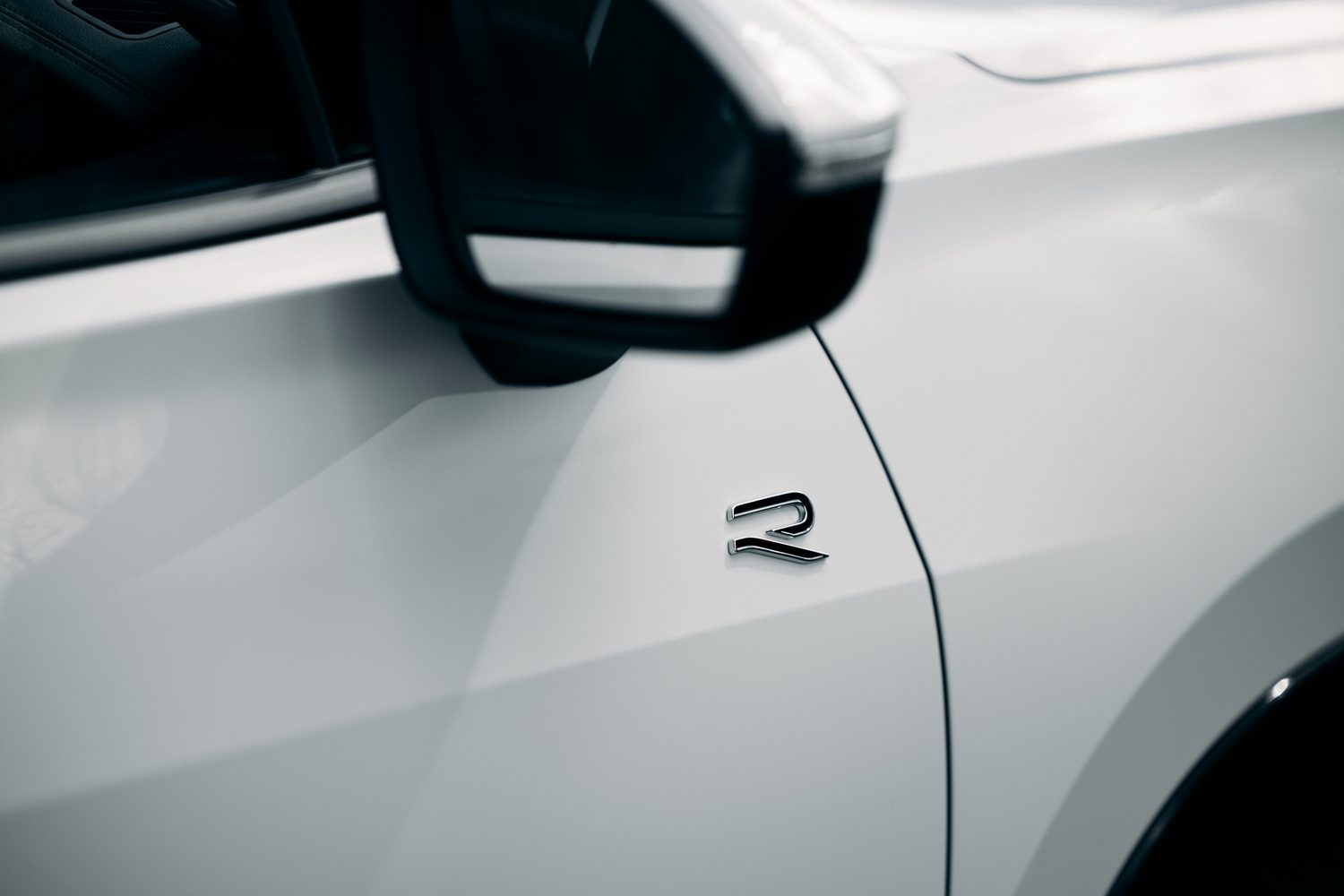
On-the-road prices start at €56,745 for the entry-level Life model with a diesel engine, but even that is pretty well equipped.
You get the 12.9-inch touchscreen, built-in navigation, Apple CarPlay and Android Auto, high-powered USB-C charging sockets, three-zone climate control, keyless start, parking assistance, rear-view camera, switchable driving modes, adaptive cruise control, rain sensing wipers, 17-inch alloy wheels, light-up VW logos, heat-insulating glass, three ISOFIX points, ambient cabin lighting, heated front seats and a full suite of electronic safety assistants.
There's an Edition 75 version, with the same 2.0-litre TDI engine, for €56,945, which adds metallic paint, tinted rear windows, silver roof rails, 'LED Plus' headlights, keyless entry, parking memory and an electric tailgate.
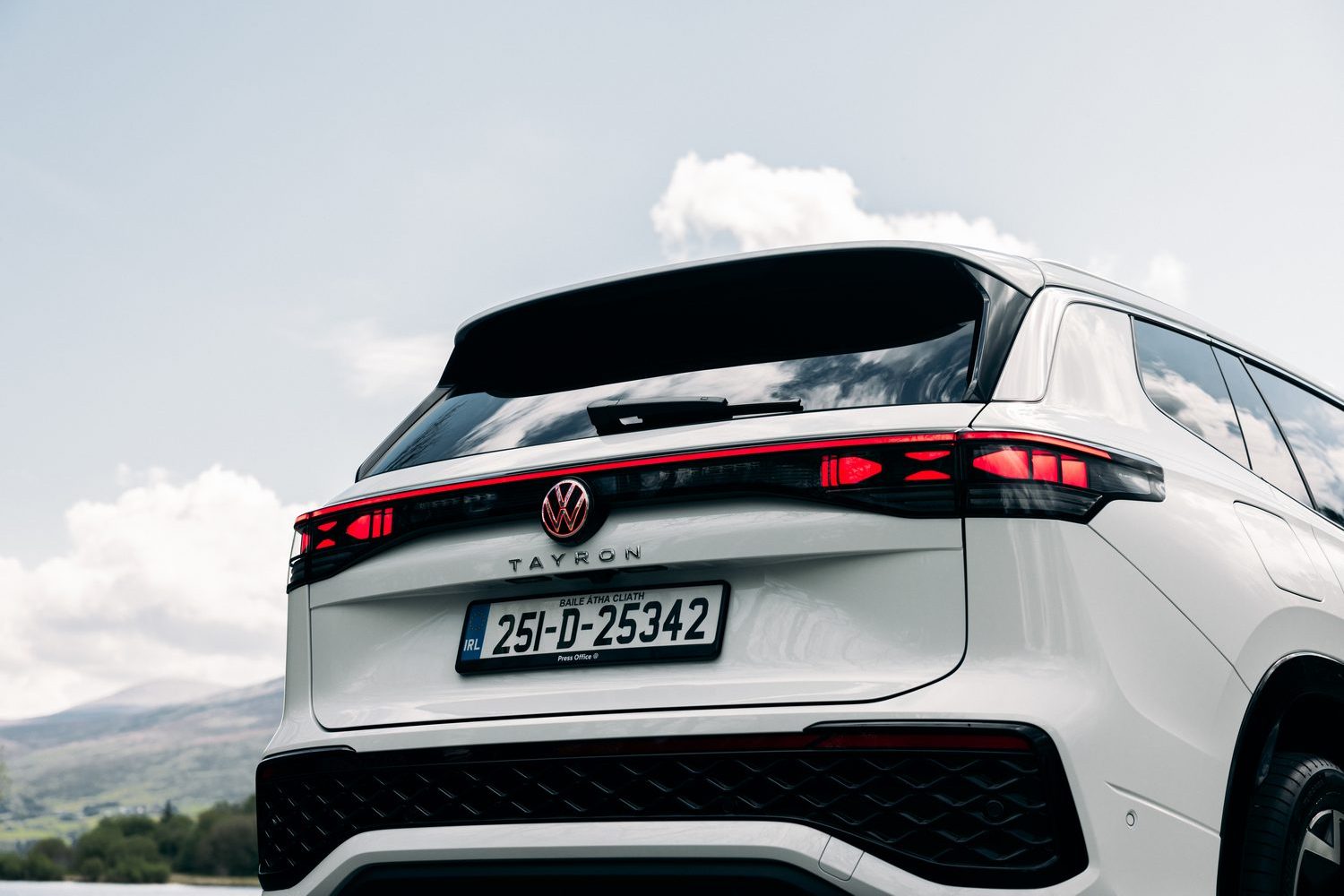
Next up is Elegance spec, which costs €65,770 in diesel form, or €57,645 in eHybrid form (it's the entry-level plug-in model), adding 19-inch wheels, tinted side glass, LED Plus headlights, more colours for the interior ambient lighting, more interior and exterior chrome, massaging front seats with 'ArtVelours' microfleece trim, heated windscreen washers, keyless entry and a powered tailgate.
Next up is the R-Line, which starts at €69,105 in diesel form, or €58,300 as a PHEV, and that comes with a different design of 19-inch alloy, R-Line body kit, black headlining, gearshift paddles, heated outer rear seats (oddly, only for the diesel model) and a heated windscreen (again, diesel-only).
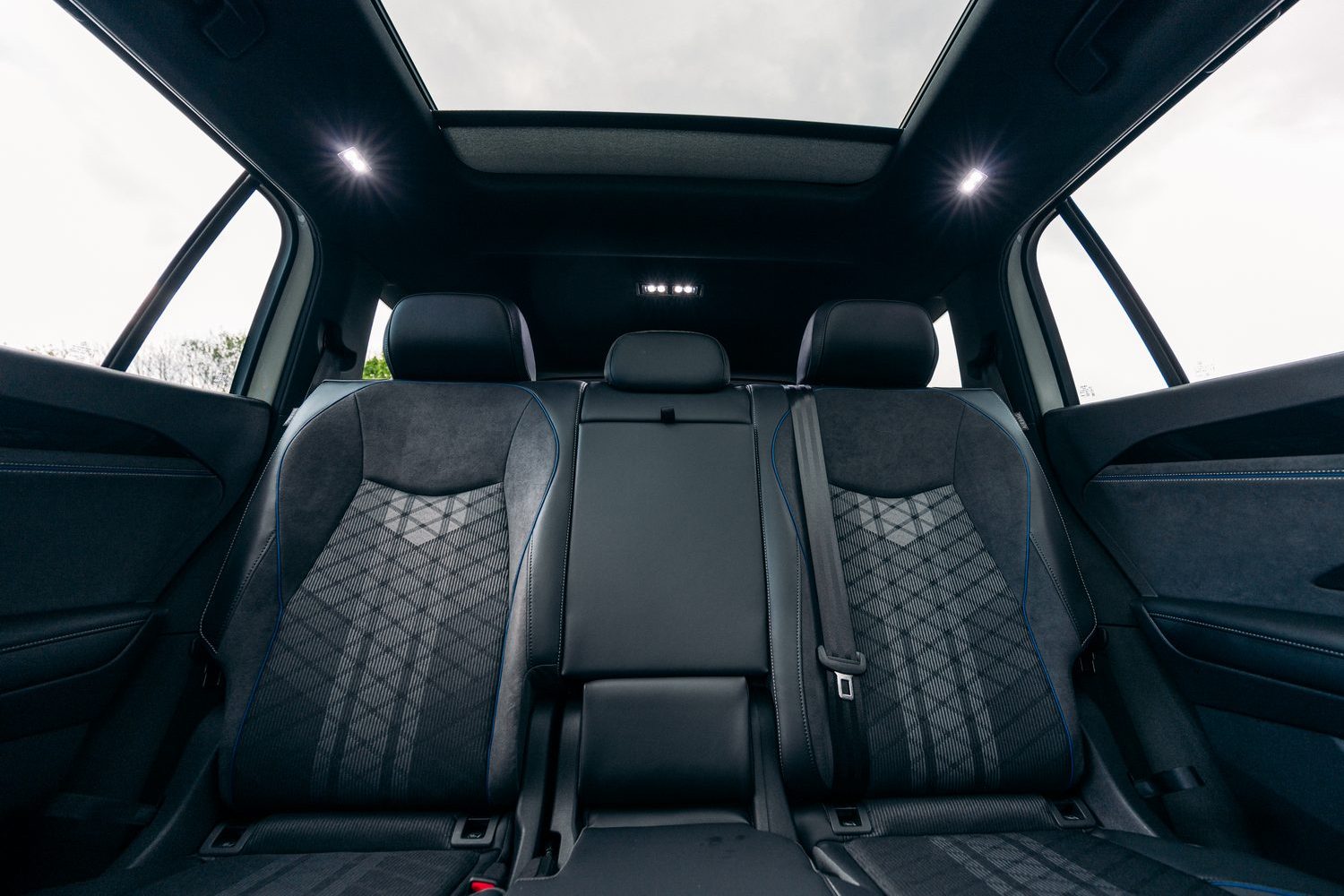
The R-Line Edition 75 (the one we're testing, €71,005 as a diesel, or €60,200 as a PHEV) adds metallic paint, a panoramic glass sunroof and a head-up display.
The Tayron is, as you might expect, comparably priced to the Skoda Kodiaq, which is hardly surprising given that the two cars are identical under the skin. The Skoda undercuts the VW's price by only a few hundred Euro, model for model, so the choice really comes down to personal taste.
Performance of the 2025 Volkswagen Tayron 2.0 TDI R-Line on Irish Roads
• Secure handling
• Refined at all times
• Firm ride on big wheels
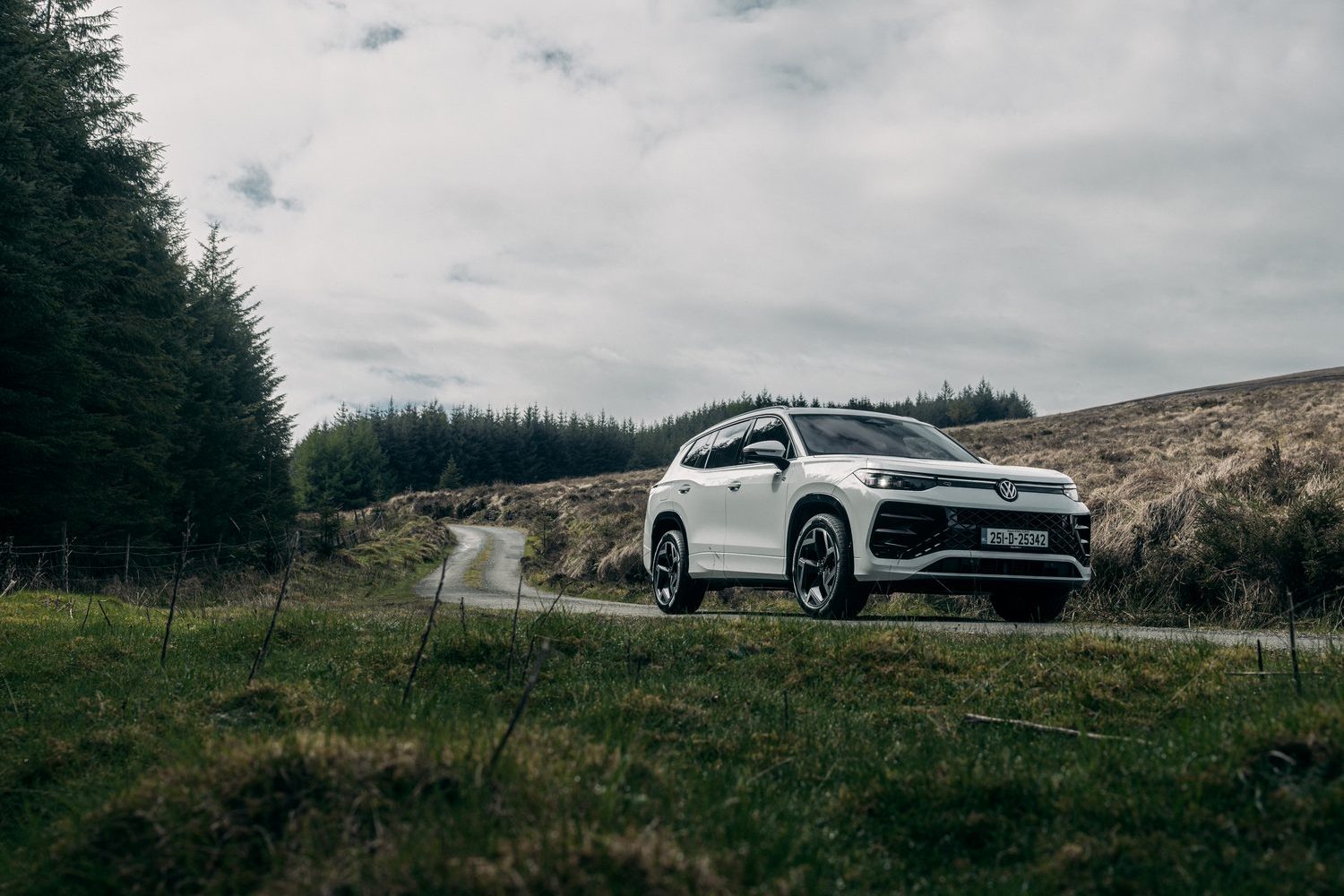
Look, the Tayron is what it appears to be on the surface, a large, practical family SUV. That description doesn't include 'fun' nor 'excitement.' Then again, the Tayron is also perfectly capable.
We took our test car on an extended drive at one point, taking in a tight and twisty mountain road, and while it may not have been the most exciting car ever along that route, neither did the Tayron disgrace itself. The steering doesn't have much feel, but the weighting is fine and the response speed nice and proportionate, so you feel confident when tackling a tricky stretch of road.
On bigger, wider roads the Tayron is more at home, and while it does suffer at times from too much tyre noise, it's mostly nicely refined and relaxed, and thanks to its frugal diesel engine, it knocks off big distances with ease.
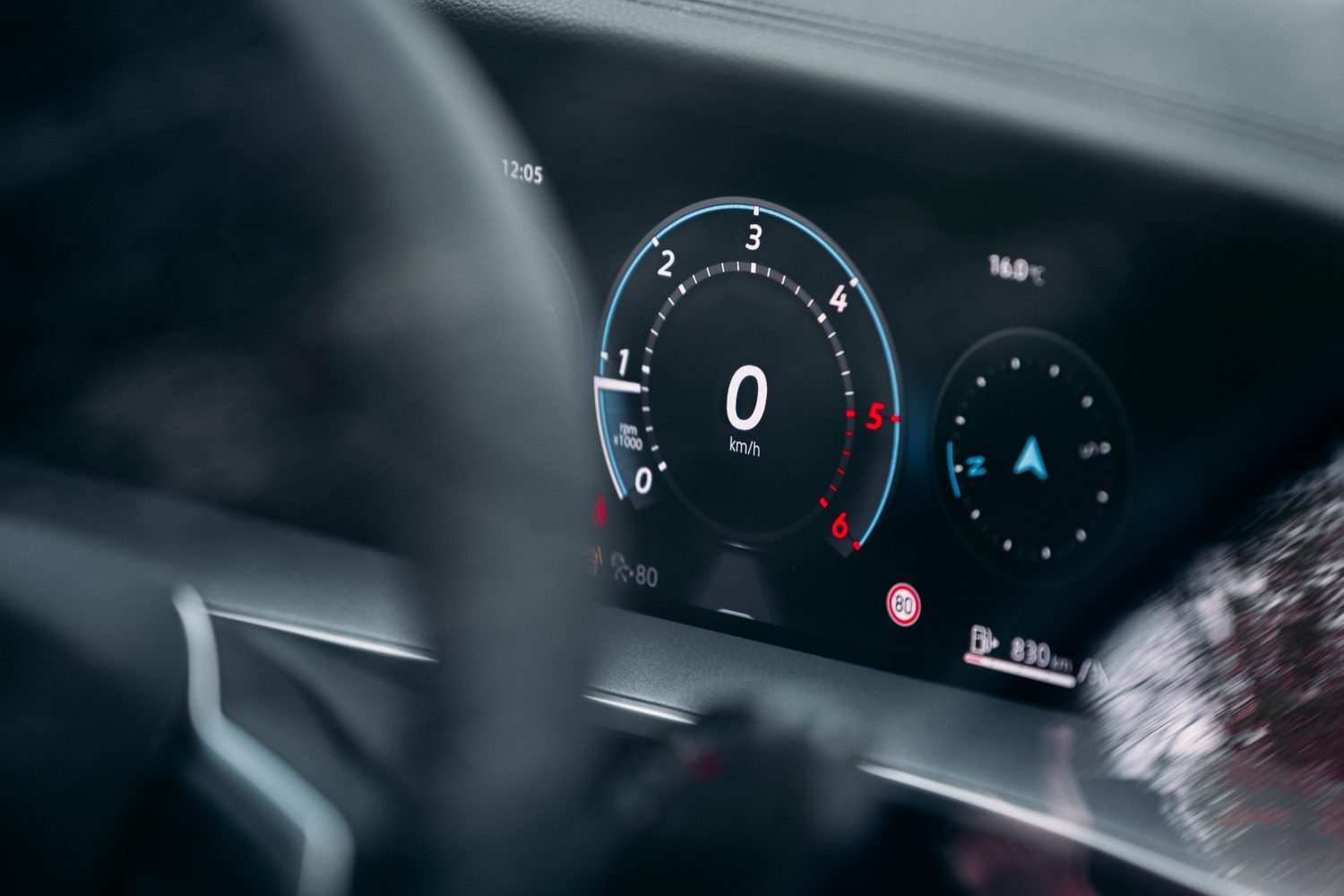
If the Tayron falls down a bit, it's in its ride quality. OK, so this is an R-Line model and it's therefore supposedly the sporty version, but our test car reacted too much too often to bumps and lumps, especially around town.
To my mind, the first duty of a family-friendly car is to make sure that everyone's comfortable, so it might be better to invest in a Tayron model that comes with smaller alloy wheels (the still impressively equipped Life version runs on 17-inch rims) in the interests of greater comfort.
The Tayron's a big car, but around town you don't really feel that as outward visibility is decent, and the turning circle is fairly tight, even though the Tayron doesn't come with rear-wheel steering.
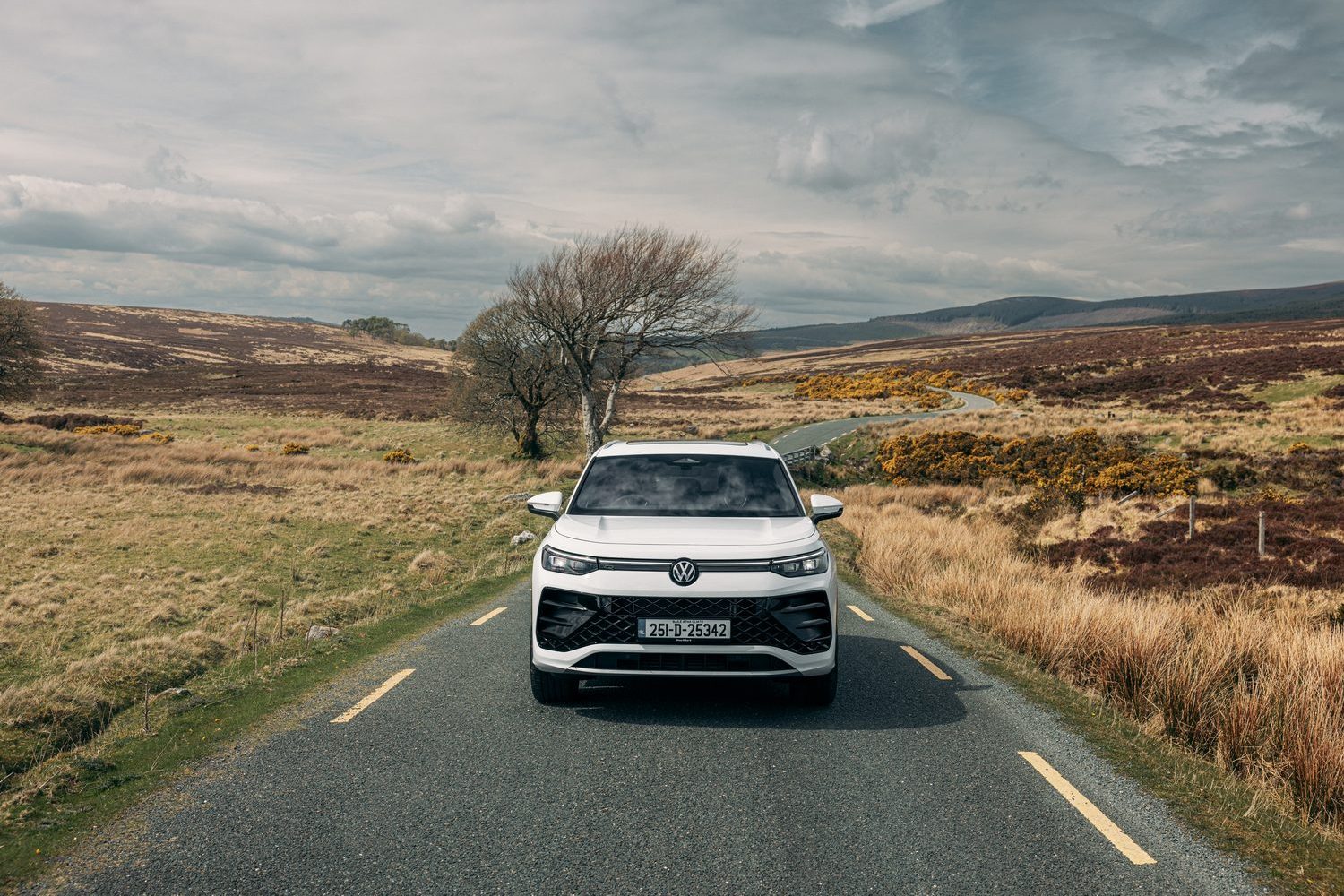
Performance is fine from the 150hp 2.0-litre TDI engine, although it's hardly the quickest thing around, and the standard seven-speed DSG automatic gearbox is much as it has always been.
Running Costs of the 2025 Volkswagen Tayron 2.0 TDI
• Decent economy from a familiar engine
• This version is too expensive
• Only a three-year warranty
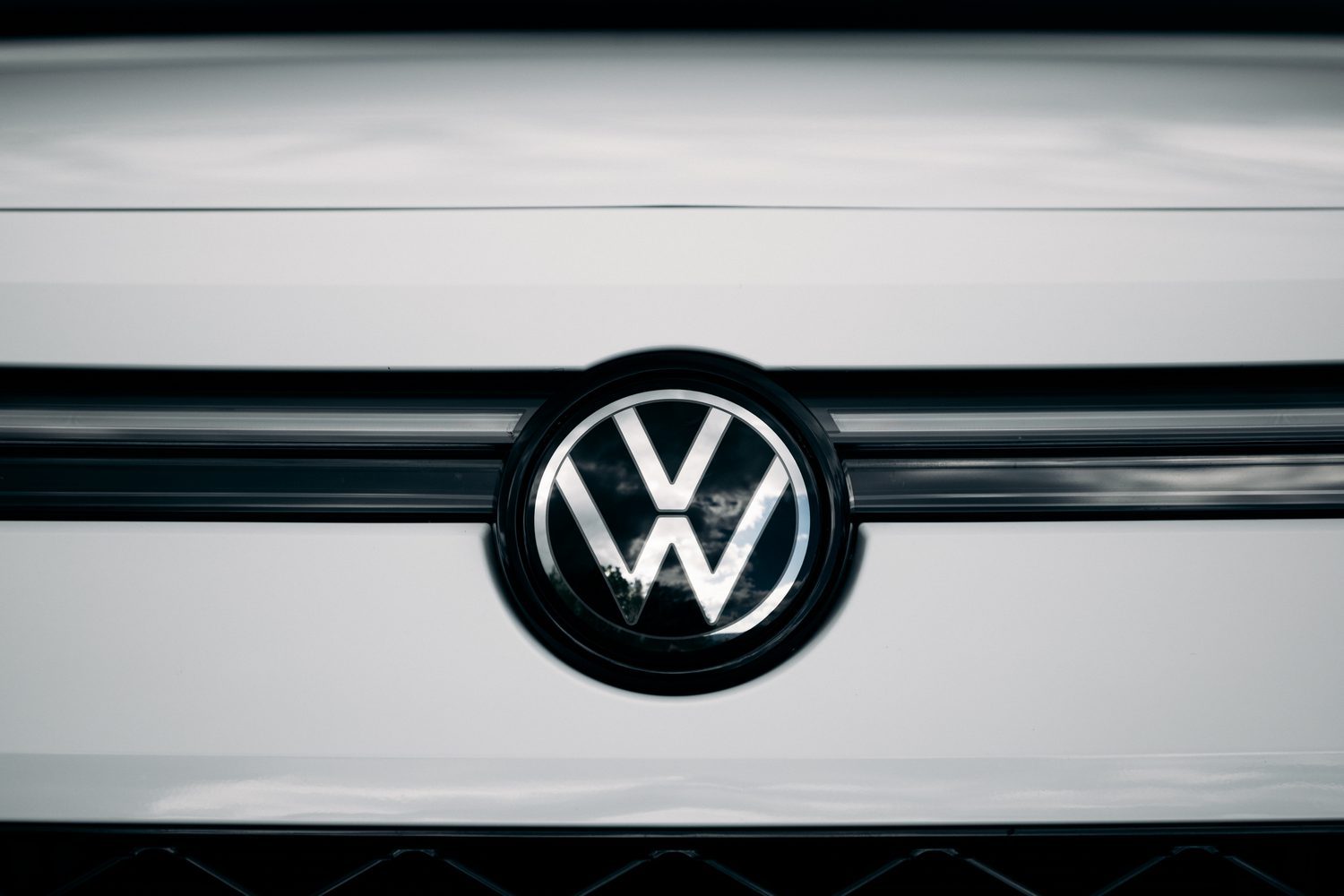
The Tayron's 2.0-litre TDI engine might seem a bit old-school in a world of electrification, but it's very economical. Volkswagen quotes average fuel consumption of 5.4 litres per 100km, and we managed to average 5.9 litres per 100km over a week that included a mix of motorway driving, in-town snarl-ups and a twisty mountain road.
There is an 'Eco' setting amid the selectable driving modes, which may help you eke out slightly better economy, but to be honest, changing your driving style will have a much bigger impact than changing the driving mode.
Motor tax is charged at a fairly reasonable €270 per annum. VW has a standard three-year warranty, limited to 90,000km.
Volkswagen offers an inclusive service plan for all of its models, which covers regular maintenance and consumables, and that starts at €12.99 per month.
Verdict - Should You Buy the 2025 Volkswagen Tayron 2.0-litre TDI R-Line Edition 75?
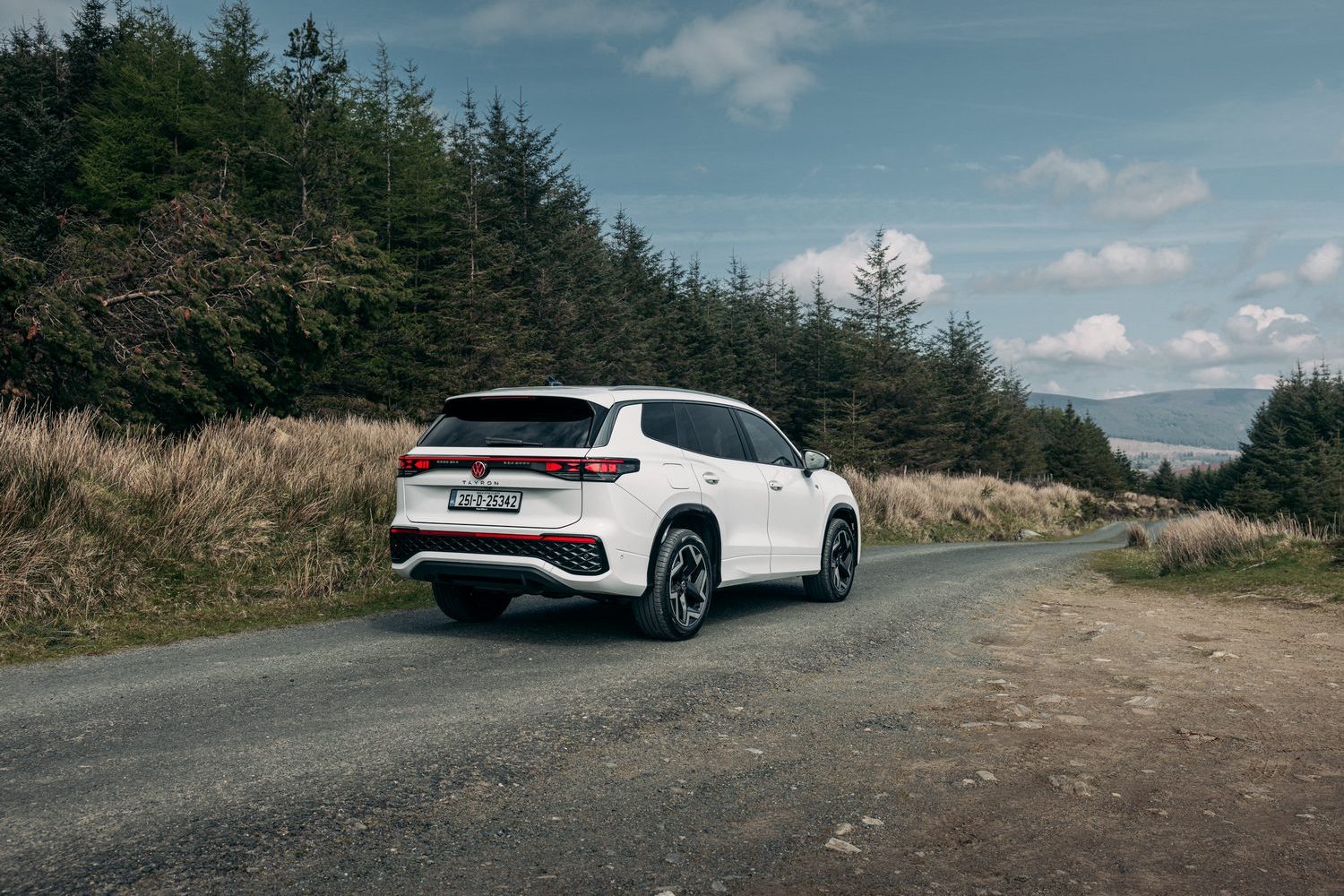
No - but that's a no which is specific to this model. At €71,100 for this R-Line Edition 75, this particular Tayron is just too expensive. Save yourself €15,000 or thereabouts and buy a Tayron Life, which comes with smaller alloy wheels for a comfier ride, and retains all of the space, practicality, economy, comfort and refinement benefits of this model. Honestly, you can live without the extra gloss of the R-Line.
FAQs About the 2025 Volkswagen Tayron 2.0-litre TDI R-Line Edition 75
Is the Tayron bigger than the Touareg?
No, the Touareg is longer, taller and wider than the Tayron. Ah, but the Touareg doesn't - and has never - come with seven seats, so in some senses the Tayron is more versatile. As Obi-Wan Kenobi always says, it depends on your point of view.
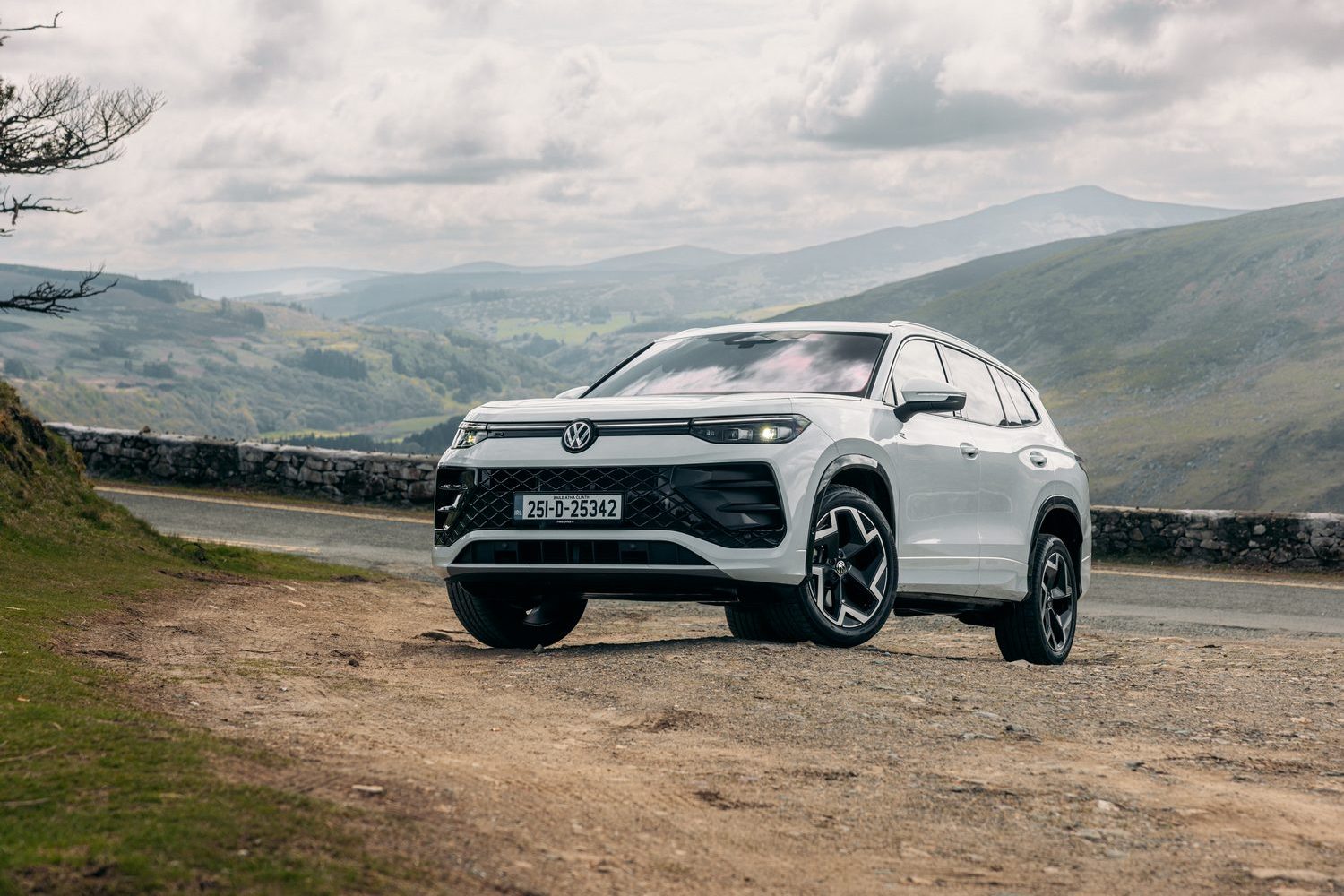
How many miles per gallon does a VW Tayron get?
Well, we deal in litres per 100km here, but on our extensive test, we recorded an average of 5.9 litres per 100km which equates to 47.8mpg. Volkswagen officially quotes 5.4 litres per 100km, which is 52.1mpg.
What is the VW Tayron replacing?
The Tayron effectively replaces the old Tiguan Allspace, which was the longer version of the Tiguan, and had the option of seven seats. The Tayron follows that template exactly, but Volkswagen has decided that the model needs its own identity, separate to the Tiguan, hence the new name.
How many ISOFIX points are in a VW Tayron?
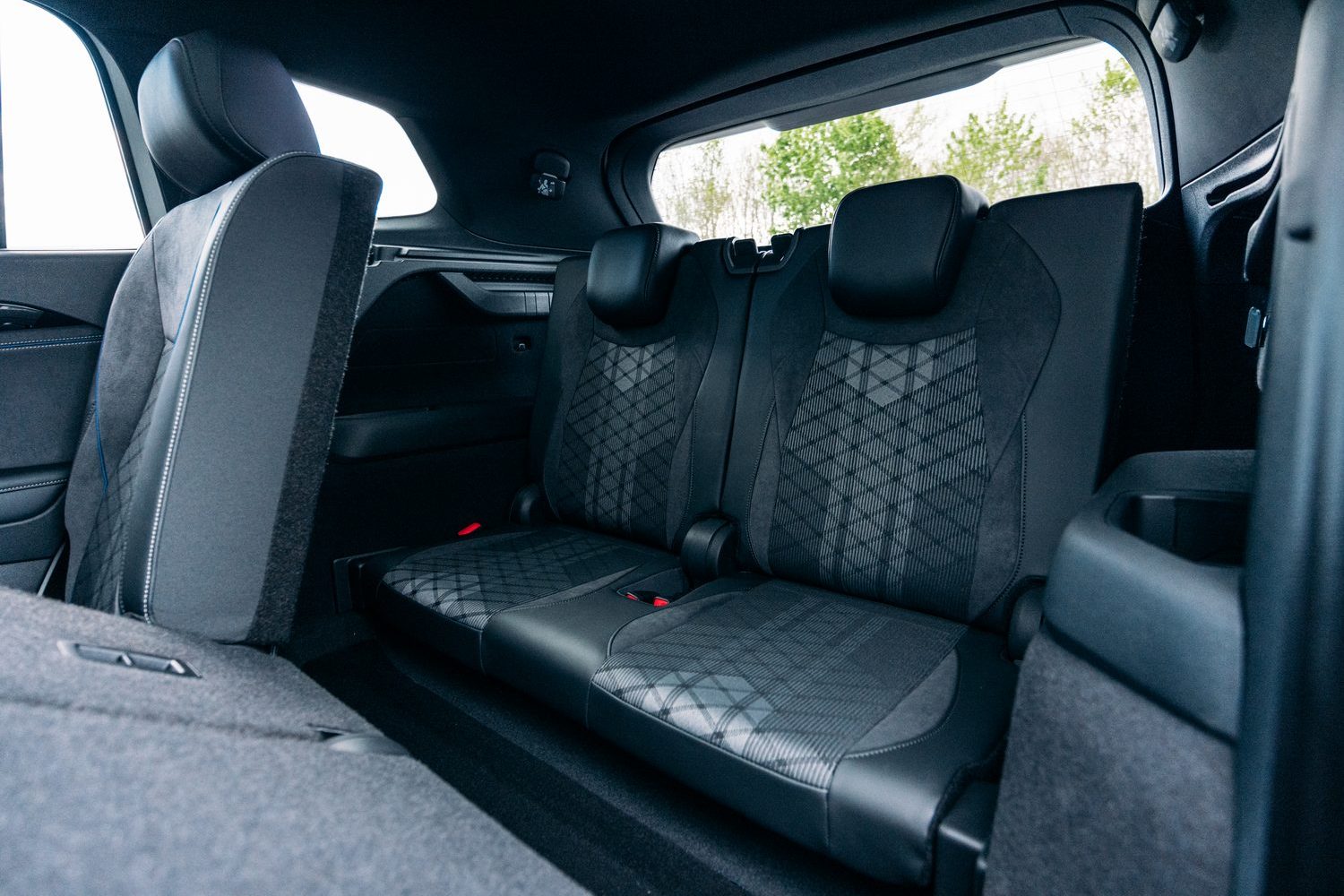
There are three ISOFIX anchor points in a Tayron - two in the outer middle row seats, and one in the front passenger seat. None in the third row, though.
Want to know more about the Volkswagen Tayron?
If there's anything about the Volkswagen Tayron we've not covered, or you'd like help in choosing between it and other cars, you can avail of our expert advice service via the Ask Us Anything page.

